THE SYNERGY EDITION




TAKING ON GLOBAL CHALLENGES
LEADERSHIP & INNOVATION

FINDING THE RIGHT GROOVE















TAKING ON GLOBAL CHALLENGES
LEADERSHIP & INNOVATION

FINDING THE RIGHT GROOVE










Each academic year breathes new life into any school. The arrival of students, the palpable excitement of what’s to come, the buzz in the hallways after the summer respite. The fall start is only balanced by the spring season – graduation! A true celebration of the years’ achievements.
Every year the CU Skaggs School of Pharmacy and Pharmaceutical Sciences publishes this annual Pharmacy Perspectives magazine. We’re calling this year’s publication “The Synergy Edition.” And, with good reason.
As we look back over the last academic year, we celebrate the kind of accomplishments that could not have been achieved without highly skilled and compassionate professionals coming together to create something truly extraordinary; something bigger than the sum of the individual parts.
National Ranking
Largely due to the impact of such dynamic collaboration, the CU School of Pharmacy climbed five spots to be ranked the 15th top school of pharmacy out of the 141 ranked programs comprising the “2024 Best Pharmacy Schools” by US News and World Report.
Media Attention
The Center for Drug Discovery and its pharmaceutical researchers were featured in the CNBC special feature “Cities of Success.” The program highlighted the Center’s ability to accelerate drug development using state-of-the-art technology including robots and bioprinters.
State-wide Engagement
The Colorado Consortium for Prescription Drug Abuse Prevention, housed in the School of Pharmacy, worked with multiple stakeholders, including state and federal leaders, to lead Colorado’s multi-pronged opioid abuse response engaging public health offices, grassroots organizations and dedicated individuals.
Global Impact
Our pharmaceutical researchers worked with international AIDS investigators to identify a new drug formulation for children with HIV, while an interprofessional team of researchers worked with doctors in El Salvador to identify the potential cause of a mysterious kidney disease affecting agricultural workers.
Diversity E orts
A program in the School which provides health sciences training for underrepresented minority or disadvantaged students (CUrehs) celebrated its 10th year with astounding outcomes; 100 percent of the students graduated from college and more than 40 percent entered graduate or professional programs.
The list of accomplishments goes on. And behind every achievement is the intentional commitment to CU Pharmacy’s mission to advance the practice of pharmacy through innovation, patient care, and interprofessional collaboration.
Enjoy the stories of synergy,
Ralph J. Altiere, PhD Dean, University of Colorado, Skaggs School of Pharmacy and Pharmaceutical SciencesIt is also a time for reflection. What have we, The University of Colorado Skaggs School of Pharmacy and Pharmaceutical Sciences, accomplished this year? Well. Buckle up.
While accidental overdose deaths across the national soared, the CU Pharmacy Colorado Consortium for Prescription Drug Abuse and Prevention was acknowledged by Johns Hopkins University’s inaugural Excellence in the Application of the Opioid Litigation Principles Award. The award is “designated by a coalition led by faculty at the Johns Hopkins Bloomberg School of Public Health that developed a set of evidence-based guidelines, known as the Principles, to help policymakers use opioid settlement funds effectively and equitably.” Given to the State of Colorado, it specifically called out the Consortium's work, noting that it released its own opioid response blueprint in 2019. Staying true to its groundbreaking work, this past year the Consortium also teamed with AEG Live to launch a major campaign and partnership, distributing naloxone at concert venues across the state.
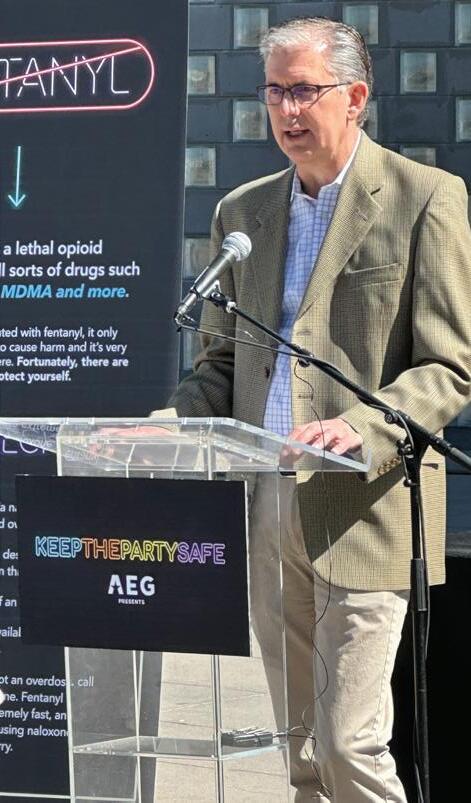
With the cost of healthcare skyrocketing, the Pharmaceutical Outcomes Research team repeatedly offered their expertise on global health issues, including the cost of diabetes medication, prescription drug prices, and Medicare. New research from Kelly Anderson, PhD, and Michael DiStefano, PhD, indicated Medicare could save $1 billion by considering added benefit of expensive Part B drugs. As wildfires raged all over the world, Kristofer Fritz, PhD, joined with Colorado State University’s Luke Montrose, PhD, to host the first in-person joint meeting between the Mountain West Regional Chapter of the Society of Toxicology and Rocky
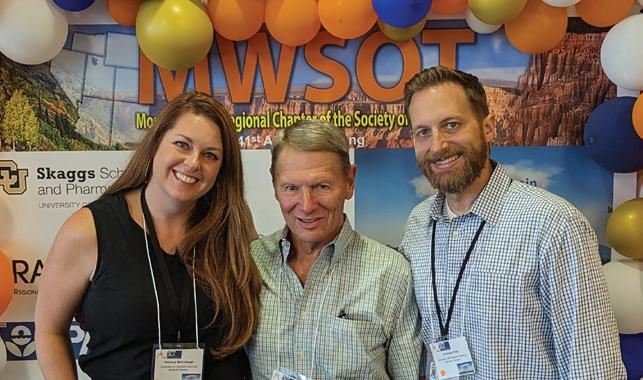 Dr. Rob Valuck speaks at the inaugural partnership event for the Consortium and AEG Live to distribute Narcan at music festivals.
Drs. Becky McCoullough, Dennis Petersen, and Kris Fritz at the Smokey Symposium.
Dr. Rob Valuck speaks at the inaugural partnership event for the Consortium and AEG Live to distribute Narcan at music festivals.
Drs. Becky McCoullough, Dennis Petersen, and Kris Fritz at the Smokey Symposium.
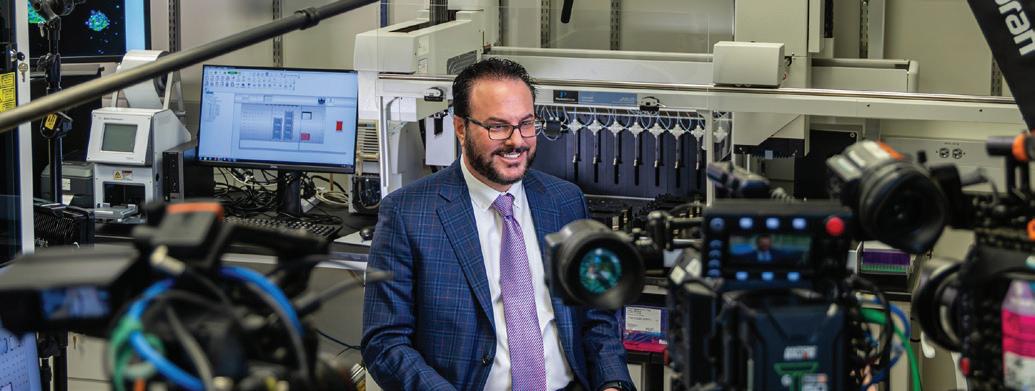
Mountain Wildfire Smoke Symposium. Dubbed the “Smokey Symposium,” the conference focused on heavy metals toxicity and wildfire smoke, and how they impact our immune system. The event drew contributions and support from the Environmental Protection Agency, Colorado Regional Air Quality Council, and private agencies to create a safer and environmentally friendly world.
Dan LaBarbera, PhD, saw his work featured by the United States Department of Defense Congressionally Directed Medical Programs. His entire lab was highlighted for their work with novel targets for the treatment of metastatic colorectal cancer. LaBarbera also received an innovation pilot grant from the University of Colorado Cancer Center’s Shared Resources program to develop complex 3D tissue and organoid models for highthroughput drug discovery and high-content imaging, and his team is leading the charge in making Colorado a hotspot for biotechnology so much so that they were featured on CNBC.


CU Pharmacy was prominently featured at the American College of Clinical Pharmacy (ACCP) annual meeting in Dallas. In addition to numerous faculty presentations, CU Pharmacy brought home several distinguished awards: Robert Page, PharmD, was honored with a Cardiology PRN Lifetime Achievement Award; Sara Wettergreen, PharmD, received the award for Ambulatory Care PRN Outstanding Paper of the Year; Ty Kiser, PharmD, was added to the new editorial board for the ACCP Journal. And, the leadership gavel for the organization was turned over to Brian Hemstreet, PharmD, to serve as ACCP President for the upcoming year.
Working tirelessly in pediatric care, Lucas Orth, PharmD was one of the lead investigators in a new 5-year drug trial project. In partnership with colleagues from Children’s Hospital Colorado, CU Anschutz’ Adult & Child Center for Outcomes Research & Delivery Science (ACCORDS), and the CU Anschutz School of Medicine, his team will develop a coordinated approach for managing polypharmacy (taking 5 or more concurrent medications) among children with medical complexity.
The goal is to reduce patient risk of medication-related problems.
This year Colorado saw record deaths from alcohol, and Becky McCoullough, PhD, received 2.4 million in funding from the National Institutes of Health to address chronic liver disease. Currently, there are no FDA therapies to prevent the disease, and the only “cure” is a live liver transplant. That reality fueled her work to better understand how the body reacts to alcohol at a cellular level, with the prospect of discovering ways to activate liver regeneration.
In an effort to better understand dangers of chemical warfare, Rajesh Agarwal, PhD, Chapla Agarwal, PhD, and Neha Mishra, PhD, received a grant funded by the US Defense Threat Reduction Agency on "Harmonization of Ocular Biomarkers of Chemical Warfare Agent Exposure", in collaboration with the Naval Surface Warfare Center. The project’s focus is on determining the acute and chronic injury biomarkers of ocular exposure to chemical warfare agents.
While it can feel like culture is at a breaking point, Hilda Bi Ndikum, PharmD, along with clinical instructor and alumni board member Harold Okocha, PharmD, organized CU Pharmacy's participation in the campus' first annual Black Men in White Coats Youth Summit. The day was filled with mentorship, medical exposure, and networking, to strengthen the future of healthcare. Students and parents of all genders and ethnicities in 3rd grade and up attended to learn more about medical professions.

Perhaps one of our proudest accomplishments, last year’s incoming PharmD class was the most diverse in the School’s 113-year history. The class of 2027 came from 14 different states and 3 countries (including India and Vietnam); speak 19 different languages; range in age from 19-53; are 29 percent first generation students; and came to us with 180,880 hours of pharmacy experience.
Through intentional collaboration and a vision for the future, CU Pharmacy truly has much to celebrate.
 Dan LaBarbera in his lab with CNBC
Drs. Hilda Bi Ndikum and Harold Okocha, center, with students at at the Black Men in White Coats Youth Summit.
Dan LaBarbera in his lab with CNBC
Drs. Hilda Bi Ndikum and Harold Okocha, center, with students at at the Black Men in White Coats Youth Summit.
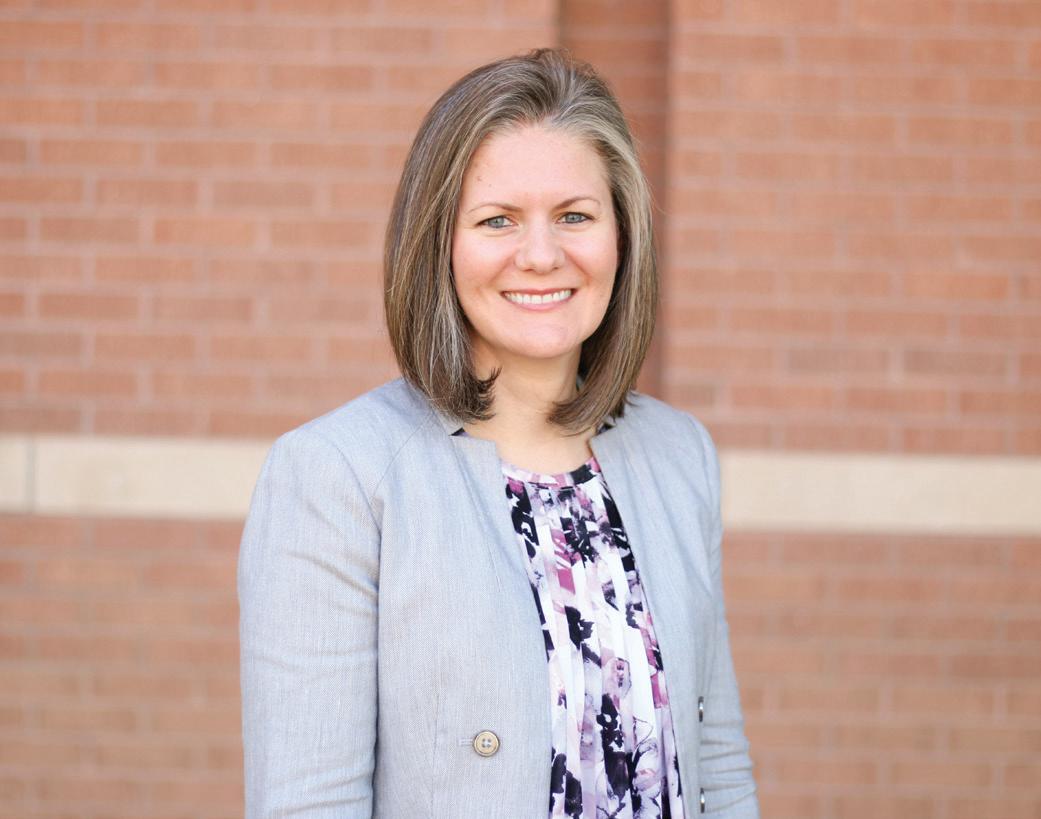
In 2023, one retirement and two bittersweet overseas moves saw CU Pharmacy with three open leadership roles. After extensive searches, input from faculty and staff, and lots of thought, this past year the School welcomed three transformational new leaders.
The Office of Experiential Education, responsible for over one-third of the PharmD education, welcomed Kimberly Stultz, PharmD, as the new Assistant Dean for Experiential Programs. Dr. Stultz’s commitment to the transformative power of hands-on learning and her wealth of experience in developing experiential opportunities will ready clinical pharmacy students to deliver exceptional patient-centered care.
“Being able to develop and manage such opportunities at this level and impact a wider student community feels like a natural progression for me as it blends my interests in pharmacy practice with hands-on teaching,” Stultz said.
In her new role, Stultz brings over 13 years of expertise in designing and implementing experiential learning for pharmacy students. Her track record in cultivating strong partnerships with preceptors and sites is expected to broaden and enrich rotation experiences for CU Pharmacy students.
"Incoming students can look forward to immersive, real-world learning experiences that align with current pharmacy practice," Stultz said. "My goal is to ensure they leave well-prepared for successful pharmacy careers."
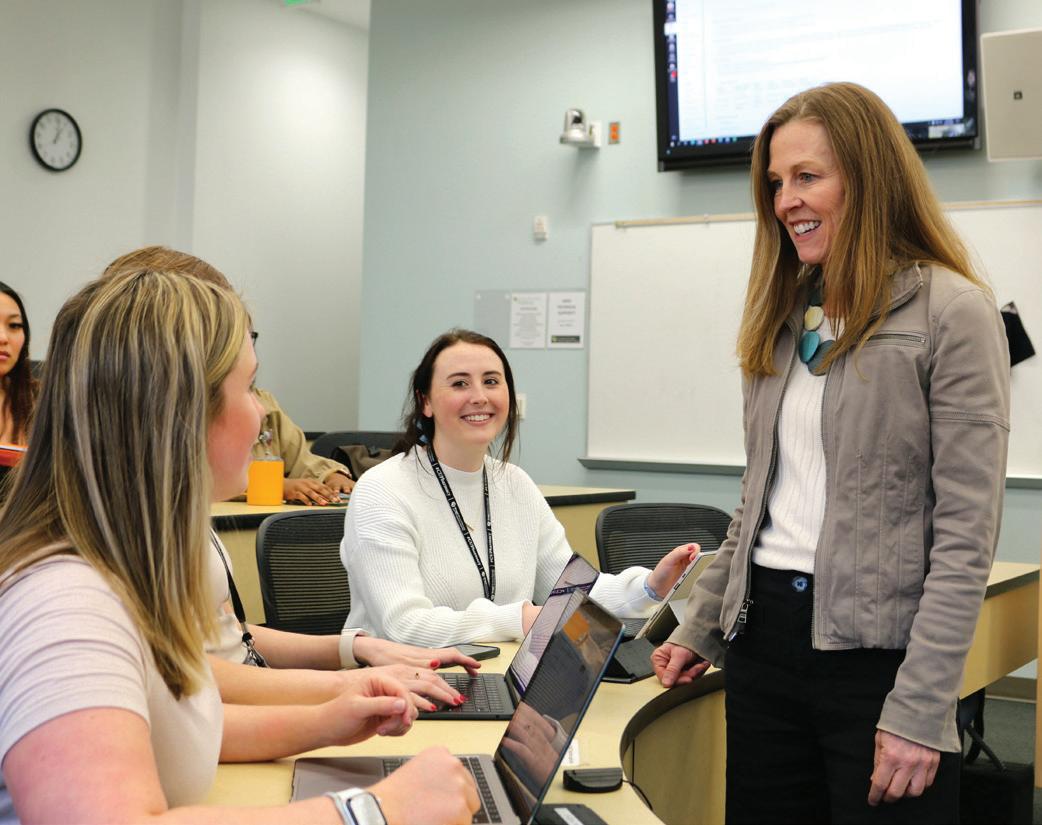
Also preparing students for successful careers is new Associate Dean for Education, Jennifer Trujillo, PharmD. With a wealth of experience in education and a career marked by a commitment to curricular innovation, Dr. Trujillo is bringing new energy towards advancing pharmacy education at CU Pharmacy.
Having previously served on the School of Pharmacy's Executive Committee as faculty senate chair, Trujillo is excited to return to a leadership position again. She expressed her eagerness to bring her leadership experience to the pharmacy program, bringing a fresh perspective and a drive towards progress in pharmacy education.
“With a solid background in education, curriculum development, and the scholarship of teaching and learning, I am looking forward to providing strategic direction for our education portfolio,” Trujillo said.
Trujillo's vision for her role is clear—to make a significant impact on the academic journey of pharmacy students. She speaks passionately about refining teaching methods, creating better learning environments, helping students adapt to the evolving academic setting, and building a supportive community.
I CHOSE CU PHARMACY OUR ENTIRE TEAM, MAKE A DIFFERENCE AND IMPROVING

Blake Hill, PhD, joined the School in December as the new Chair of the Department of Pharmaceutical Sciences. Dr. Hill’s passion for making a difference in health, coupled with an eagerness to face the challenges posed by environmental and climate-induced changes, will propel the Department of Pharmaceutical Sciences to new heights.
With a passion for advancing pharmaceutical research and a career steeped in building research infrastructure, Hill brings a dynamic perspective to the academic community. Working alongside the faculty and staff of the department, Hill plans to build on their status as a top research department by leveraging existing strengths and developing partnerships across the Anschutz Medical Campus.
"I chose CU Pharmacy because, like our entire team, I am inspired to make a difference by understanding and improving health," Hill said. "The opportunities here to work with world-class faculty, trainees, and staff to discover and deliver new therapeutics excited me."
Something new to celebrate — the University of Colorado Skaggs School of Pharmacy and Pharmaceutical Sciences has been ranked 15th in the nation by U.S. News & World Report for pharmacy schools. This recognition secures CU Pharmacy’s position in the top 10 percent of all ranked schools of pharmacy.
“This national recognition speaks to the outstanding efforts of our faculty clinicians and pharmaceutical researchers, staff and lab professionals,” said Dean Ralph Altiere. “I think you would be hard-pressed to find a more dedicated community of educators, scientists, and healthcare specialists anywhere in the country.”
Dean Altiere identified several key areas that likely impacted the School’s toptier ranking. Chief of those being the consistently high student outcomes. Over the past year, CU Doctor of Pharmacy students significantly outperformed the national average on both the National Association of Boards of Pharmacy NAPLEX exam and the American Society of Health-System Pharmacists (ASHP) residency match rate.
“The caliber of students graduating from our PharmD program is truly outstanding,” added Brian Hemstreet, senior associate dean of Student Affairs. “I believe our world-class medical campus, excellent experiential program, and innovative curriculum all contribute to providing our students with the diverse skill set needed for making a positive impact in the current pharmacy environment.”
Other factors that Dean Altiere cited as contributors to the School’s national ranking include:
• Increased research funding from NIH and other agencies
• National recognition of the Center for Drug Discovery
• Launch of the CU Research Pharmacy
• High-impact publications from faculty and graduate programs
• The hiring of the School’s first Assistant Dean of DEI
• Interprofessional education in which pharmacy students learn alongside medical, dental, physical therapy, and nurse practitioner students
• Innovative patient care practice in community, ambulatory care, health system, and specialty practice
• Innovative remote PharmD pathway
• Robust student support and leadership opportunities
USNWR updates its pharmacy school rankings every four years. CU Pharmacy moved up five places, from a previous ranking of 20th in the nation in 2020.
According to the National Science Foundation, a small percentage of underrepresented minorities (URM) pursue post-secondary studies in STEM fields. Of those who do, only 12 percent go on to receive a doctoral degree in the sciences.
Ten years ago, CU Pharmacy Professor Jared Brown, PhD, decided to do something about that.
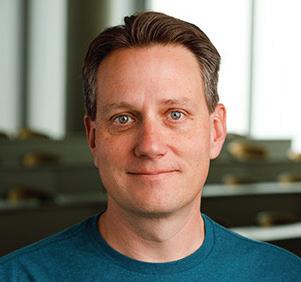
“I got the original idea from seeing other summer-based research programs that focused on topics such as cancer, biomedical sciences, neuroscience, etc., but there was nothing available that trained students in the environmental health sciences,” Dr. Brown explained.
Brown was specifically looking into environmental health sciences because it is his field of expertise. More and more the globe is seeing the impacts of environmental pollutants on human health, ranging from air pollution being a top five risk factor for cardiovascular disease to the recent recognition of health effects of PFAS in drinking water.
He was also interested in having students spend more time in a lab than just a summer. Around the same time, he discovered a possible funder, and some collaborators on campus for his idea.
Brown originally partnered with John Repine, MD and David Schwartz, MD, from the CU School of Medicine to create what would be known as the Colorado Undergraduate Research in Environmental Health Sciences (CUrehs) Program. The program, funded by the National Institute of Environmental Health Sciences (NIEHS), is a paid year-long research and mentorship opportunity specifically for undergraduate science majors from an underrepresented minority population, with disabilities or disadvantaged backgrounds.
“Most of these students have to work during their undergraduate years and don’t have the luxury of foregoing a job or taking a non-paid internship to get experience,” Brown said. “They’re excellent students in their fields, but they just don’t know how to make the leap from outstanding undergrad student to exceptional graduate student candidate.”
CUrehs helps them do that by combining practical skills like developing an effective application, writing a resume, networking and meeting working scientists with on-the-job training in a research laboratory where they are paired with a mentor based on their research interests. The students develop a research project, analyze the data, provide a final report and professionally present their findings to fellow scientists—all while getting paid.
Since that time, the CUrehs program has mentored more than 60 undergraduate students interested in environmental health and research experiences. The numbers alone are impressive, but it wasn’t until Brown was gathering data for a grant to support the program, that the student outcomes came into full focus.
“While putting together this grant renewal, we figured out that 100 percent of our undergraduate trainees ended up completing their studies at the University of Colorado Denver, as compared to the average UCD graduation rate of around 43 percent,” Brown said. “This success metric speaks volumes to the rigorous and supportive experience that these students receive from the CUrehs program.” As further proof of the program’s value, more than 40 percent of the trainees have gone on to pursue master’s degrees in pharmacy and public health, as well as Doctor of Pharmacy, Medicine and Osteopath degrees.

Today, Brown co-directs the program with Associate Professor Alison Bauer, PhD, from the Colorado School of Public Health.
“Our program is the only one of its kind for undergraduates at the University of Colorado Anschutz,” said Dr. Bauer. “… it’s important to give underserved students a paid research opportunity that has the potential to lead to future careers in environmental health research, healthcare professions, among others. Many of these students would otherwise never have any research experience prior to applying to graduate or any professional schools.”
“This is more than a summer job doing lab maintenance, cleaning pipettes and glassware,” Brownsaid. “We really wanted to provide a valuable experience and give them a leg up while developing an interest in environmental health careers.”
Each year, six undergraduates from CU Denver are selected to participate in the program which requires a one- to two-year commitment. CUrehs provides a paid summer research program of eight weeks and a year-round research opportunity up to 10 hours per week. The program is focused on training students in the environmental health sciences. This includes research opportunities in biomonitoring of environmental exposures, genetics of environmental lung diseases, nanotechnology health and safety, environmental causes of cancer and kidney disease, and health effects of inhaled pollutants.

CU Denver senior Jimmy
Tangchittsumran will complete the CUrehs program this spring – and has been accepted into the CU Pharmacy class of 2028, slated to start in August. Tangchittsumran is a first-generation college student from Queens, NY, a United States Veteran, a biochemistry researcher, and the proud paw-parent of a Labrador Retriever named Waffle. He spent his time in the program working under CU Pharmacy assistant professor and researcher Rebecca McCullough, PhD, in her lab.
“Dr. McCullough and the graduate students at the McCullough Lab have been vital to my learning and success,” Tangchittsumran said. “Whether I was having problems running a Western blot, tissue staining for immunohistochemistry, or analyzing the data to gather cogent results, I always had support and assistance with troubleshooting.”
“Jimmy is perhaps one of the most enthusiastic trainees I have ever had,” said McCullough. “He was so excited to learn new techniques and really adapted to helping my entire lab out. Since joining our group, I have seen him gain more confidence and become more independent on his project which has yielded a promising research direction for a future student to build upon.”
According to McCullough, over this past year, Tangchittsumran has attended and presented work related to his work with Dr. Kuhn (CU Anschutz) at the TRIO Ronald E. McNair Scholar Program in San Diego, CA and also participated in the Research and Creative Activities Symposium at CU Denver.
Tangchittsumran’s long-term goal is to research and work with patients with autoimmune diseases. A cause near and dear to his heart, he has made it a priority in his education and is very excited to join the PharmD class at CU Pharmacy this fall. McCullough is excited for him as well.
“He will be a great classmate, colleague, and most importantly, a solid health provider,” she said.
Tangchittsumran’s success is reflective of an intentional program model.
“The success of our program has all to do with the student ambition and the mentorship from our faculty involved,” said Bauer. “We have many students that start our program with no research experience at all, however some have left with authorship on a published paper or travel to a scientific meeting to present their research. It’s all about the mentorship.”
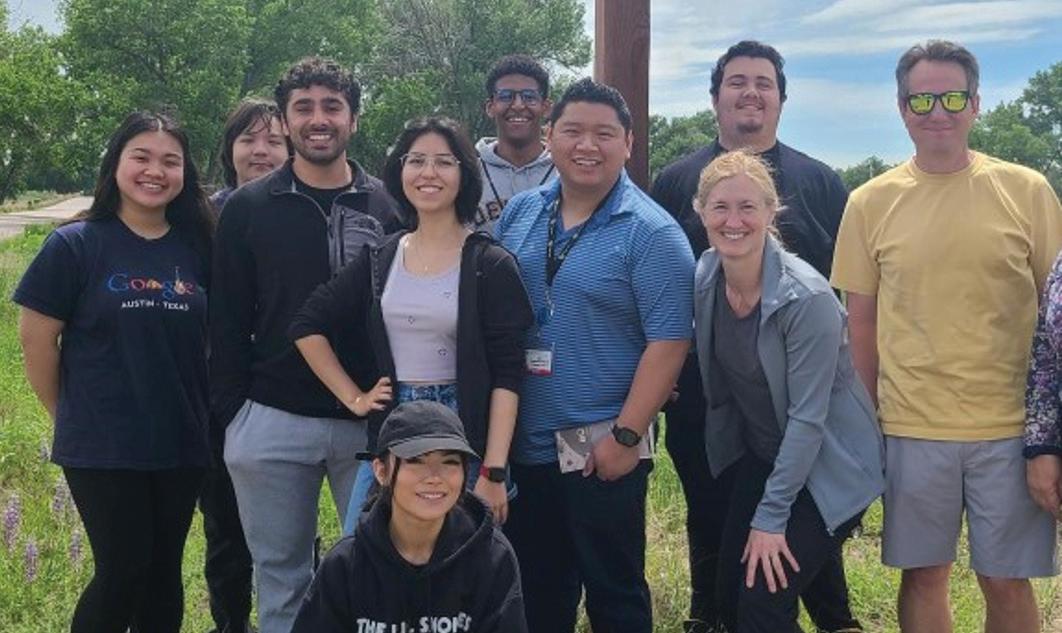

CU Pharmacy faculty have a long history of leading advocacy efforts at the state and national level. But this year, one outstanding Doctor of Pharmacy student had the opportunity to learn about pharmacy policy and participate in advocacy efforts during the annual RxIMPACT event in Washington, DC. P3 Kyla Jantz was selected by the National Association of Chain Drug Store (NACDS) to represent the CU School of Pharmacy at the event. Jantz joined more than 300 pharmacists and pharmacy students from all 50 states. In addition to participating in seminars on pharmacy-related policies that involved PBM reform and provider status for pharmacists, Jantz participated in a Capitol Hill press conference and met with Colorado senators and representatives to discuss policy reform.
Kyla Jantz, center, during her time at the United States capital. Jimmy Tangchittsumran in the lab.
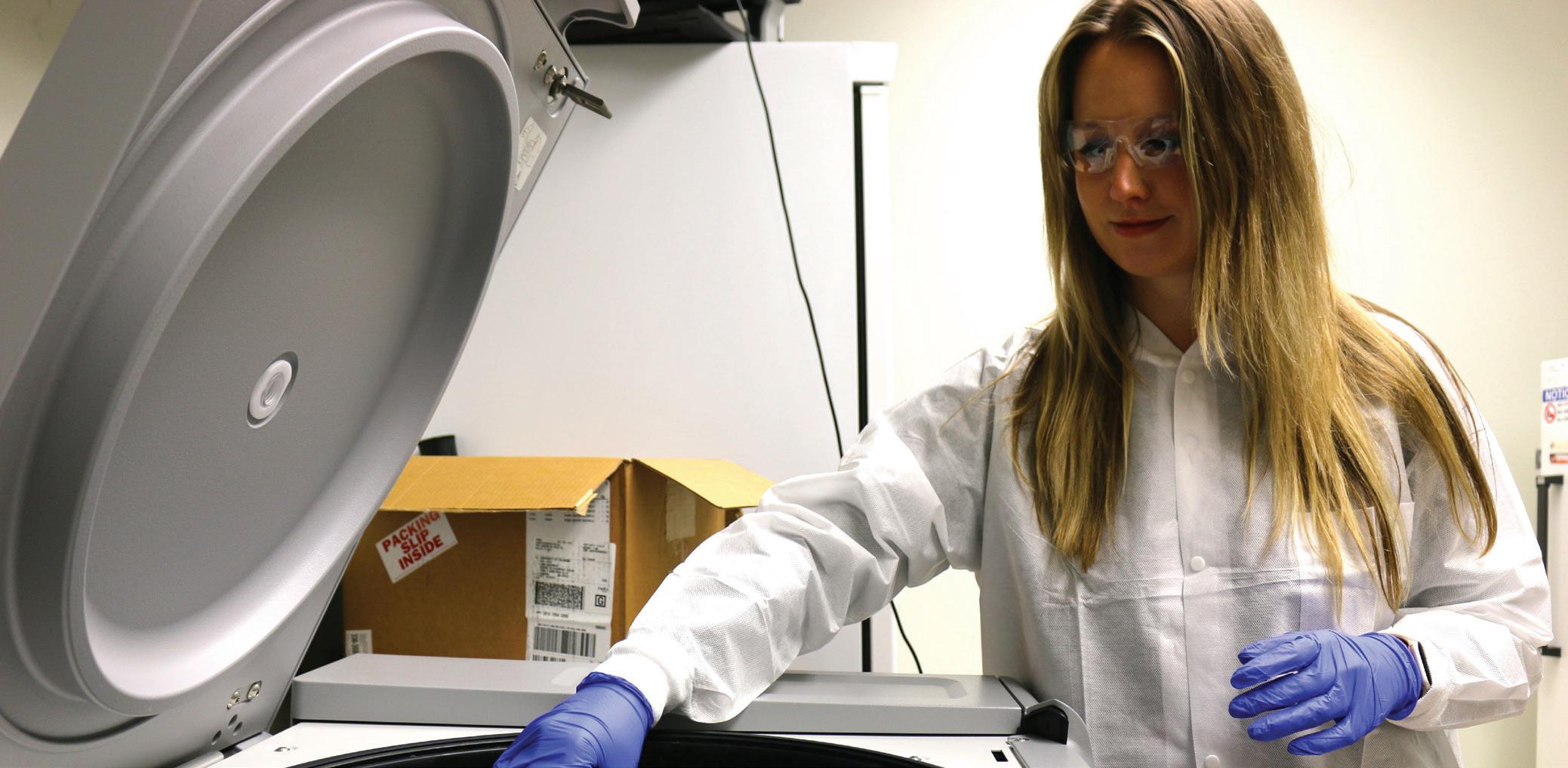
Dr. Kristina Brooks in the lab at CU Pharmacy. Brooks provides pharmacology support for the International Maternal Pediatric Adolescent AIDS Clinical Trials (IMPAACT) Network.
In 2020, UNICEF reported that a child was infected every 2 minutes with HIV. Now, researchers at CU Pharmacy have helped confirm the dosing, safety and effectiveness of a drug formulation designed for treating children with human immunodeficiency virus (HIV) — a major step in preventing the nearly 100,000 pediatric HIV deaths each year.
“HIV treatment requires the use of multiple medications, so treatment in children has historically been challenging as it can require the use of multiple tablets and or liquids that don’t always taste the best,” said Kristina Brooks, PharmD. “Children also grow and develop quickly so there is also a component of medication recommendations changing as children grow older so they may have to switch medications.”
The dosing was confirmed for a new dispersible and an immediate-release tablet containing three medications - dolutegravir, abacavir and lamivudine — in a single fixed dose combination (FDC) formulation is safe, well tolerated, and effective for treating children with HIV. The dosing based on the concentrations of each medication in the blood was also appropriate.
According to Dr. Brooks, this is the first FDC containing dolutegravir that can be used for children from 13 to 88 pounds. Dolutegravir, abacavir and lamivudine have been shown to be safe and effective worldwide to treat HIV. Brooks and Jennifer Kiser, PharmD, PhD, worked with a team of investigators through the International Maternal Pediatric Adolescent AIDS Clinical Trials (IMPAACT) Network to look at both an existing immediate release tablet and a new formulation of dispersible release tablets containing all three drugs to see if it would yield the same positive results they have seen in adults and adolescents.
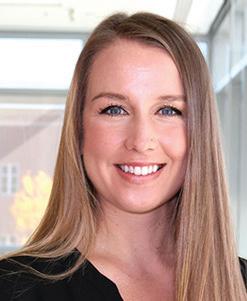
“57 children were enrolled across five weight bands in four countries,
of which 54 children used the new combination over 24 weeks. In 98 percent of the participants who continued the study drug, the amount of HIV in the blood remained suppressed below 200 copies/mL at week 24. The safety, tolerability, and effectiveness of these formulations look very positive,” Brooks said.
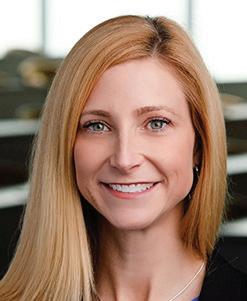
Child-friendly FDC formulations for HIV are limited. Brooks said this new formulation could help enable continuity of treatment, improve treatment outcomes and make it easier for caregivers responsible for dispensing the drugs. This study also helped support recent labeling updates by the U.S. Food and Drug Administration to expand the use of this formulation to children aged at least 3 months and weighing at least 13 pounds.
There are currently two million children living with HIV across the globe. Only 52 percent are on therapy, and despite making up only four percent of the worldwide HIV population, children account for 15 percent of AIDS-related deaths. Studies like this are vital to improve these outcomes and to make medication more accessible around the world.
“We must continue to pursue child-friendly treatment options to overcome the current global disparity in treatment outcomes between children and adults,” Brooks said.
Some of the children who were in the initial trial are still on the new drug formulation through an open access program. The longerterm safety, tolerability, and effectiveness through 12 months of treatment is under analysis now and will be reported separately.
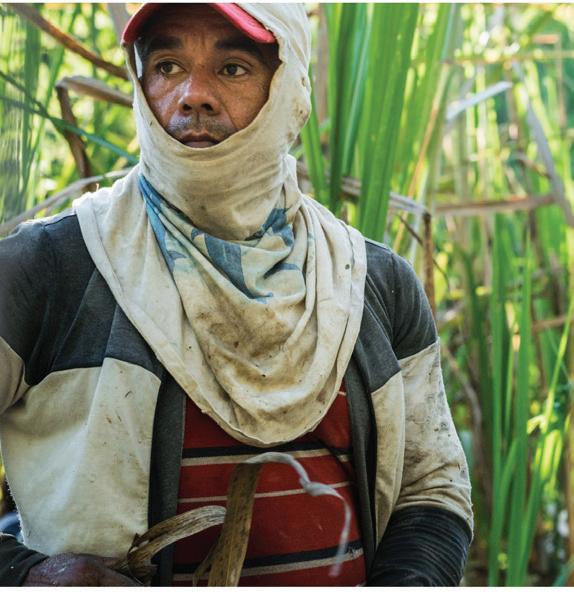
Wildfires are on the rise, and while a team of CU Pharmacy researchers are diligently working to identify wildfire toxicity, another team is working to find out how intentional fires may be contributing to a mysterious kidney disease.
Known as prescribed burning, farmers worldwide have used the technique for an estimated 12,000 years to return nutrients to the soil. However, some crop burning has unintended side effect, such as an ongoing epidemic of chronic kidney disease in manual laborers across the world.
While heat stress and climate change have contributed to this epidemic, Jared Brown, PhD, has identified tiny silica particles released from rice husks and sugarcane ash that can be inhaled or ingested through contaminated drinking water that cause chronic kidney damage.
“To date, there are no studies we are aware of that have identified a toxicant that can cause chronic kidney disease which is actually present in kidney tissues of patients suffering from this unknown disease,” said Dr. Brown. “These data provide an important clue to the mystery and suggests that in addition to heat stress from climate change that toxicants from sugarcane ash could be contributing to the disease.”
Brown worked with Richard Johnson, MD, from CU School of Medicine and doctors at Hospital Rosales in San Salvador, El Salvador, to evaluate patients suffering from this mysterious chronic kidney disease.
Findings point to ash as possible cause
Brown and the research team found significantly more silica particles in the kidney tissue of patients with this particular disease compared to patients with other known kidney diseases. The study suggests the disease could result from exposure to sugarcane ash, which contains amorphous silica nanoparticles. This process may also be linked to people who work in rice paddies, as the burning of the rice paddies, which is also commonly done, can also lead to the release of silica-containing ash. While the data is preliminary, the team is confident that toxicants are involved and hope their findings can spur change.
In 2019, the United Nations Office on Drugs and Crime, United Nations Commission on Narcotic Drugs met with the prime responsibility for policy making on drug-related matters. Their declaration for the meeting? “Strengthening our actions at the national, regional and international levels to accelerate the implementation of our joint commitments to address and counter the world drug problem.”
The 2019 meeting set a 2024 benchmark for a mid-term review, to take place in Vienna. This year, they had a very special guest: Jacci Bainbridge, PharmD.
This is the second consecutive year that Dr. Bainbridge has been invited to testify at the U.N.
“I was invited to speak because of my participation in cannabis education and clinical trials with cannabis,” she said.
Bainbridge is a professor in the CU Pharmacy Department of Clinical Pharmacy and serves as a clinical pharmacy specialist at the Anschutz Outpatient Pavilion in the Neurology Clinic, which is part of the Neurology Residency Teaching Program at the University of Colorado Denver. Her patients include people with neurologic diseases, including Epilepsy, Parkinson’s Disease, Multiple Sclerosis, migraines, and Willis-Ekbom Disease (formally known as Restless Legs Syndrome). As part of her research, Bainbridge has conducted several cannabis trials and sees patients with post-traumatic stress disorder and depression.
“I spoke (at the U.N.) about how we talk to and interview patients in the neurology clinics,” she explained. “So potential drug interactions, specifically cannabis, should not be a commodity. It is not an innocent bystander.”
Bainbridge credits the work of fellow CU Pharmacy professor Robert Page, PharmD, for spreading the word on being cautious about cannabis, and while she sees its benefits, she also agrees on a cautious approach.
“It should be regulated,” she said, “because it can be harmful.”
The Commission on Narcotic Drugs considers the world drug problem from a broad and comprehensive perspective and has until 2029 to review progress in implementing international drug policies.





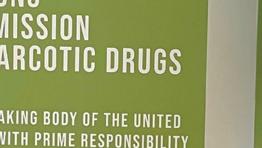
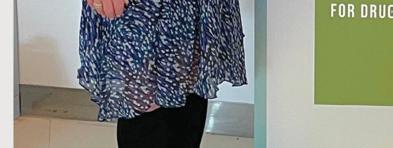
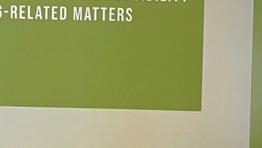
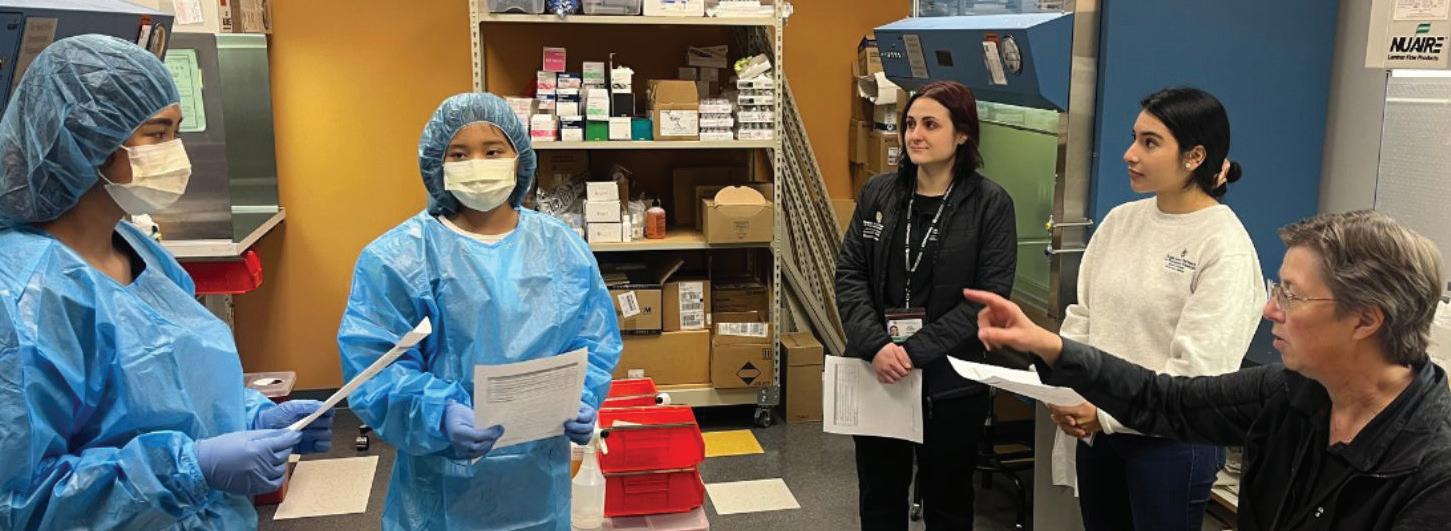
Each year more than 1500 high school students from across the state of Colorado gather for the annual HOSA State Leadership Conference. HOSA is a global student-led organization recognized by the U.S. Department of Education, the Department of Health and Human Services, and several federal and state agencies. HOSA’s mission is to empower its members to become leaders in the global health community through education, collaboration, and experience.
The competitive events at the HOSA Conference are always a student highlight. In activities ranging from emergency preparedness to biotechnology, sports medicine to behavioral health, student competitors flex their healthcare knowledge and skills to move on to the national HOSA Conference and Competition in Washington, D.C.
Faculty from CU Pharmacy have been a major catalyst in bringing attention to the vital role that pharmacists play in the
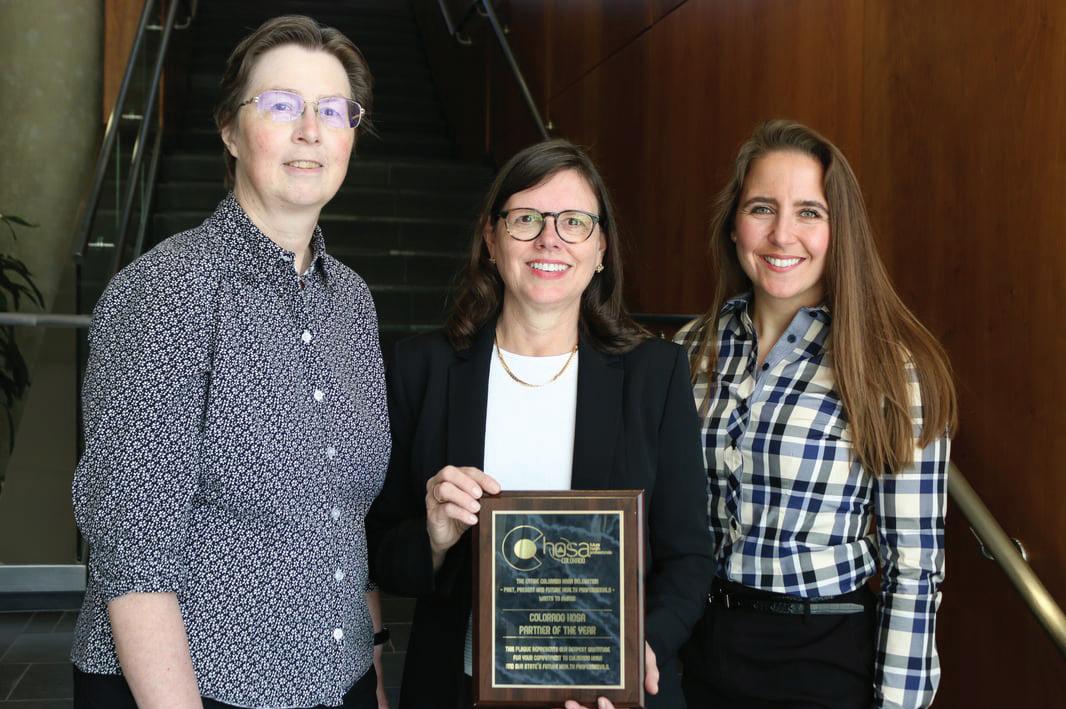
health professions. This year, CU Pharmacy’s leadership was recognized with the Colorado HOSA Partner of the Year Award. The recognition honors the School for its leadership and support in developing high school and undergraduate students into healthcare professionals of the future.
“The partnership between HOSA and CU Pharmacy underscores our commitment to supporting aspiring pre-health students,” said Chandler Follett, PharmD, pharmacy outreach specialist.
“Through HOSA's rigorous program, we have the privilege to nurture ambitious students and empower them with knowledge about the pivotal role of pharmacists in healthcare teams and the abundance of career opportunities within pharmacy. This collaboration is a sustainable approach to ensure our future healthcare teams continue to improve patient well-being and health outcomes in Colorado.”
When the HOSA organization got its start back in 1975, it largely focused on promoting health careers in nursing, dentistry, and medicine. It wasn’t until 2019 that a pharmacy event was officially added to the international Health Professions events.
And, it was largely through the tireless advocacy efforts of Julia Rawlings, PharmD, CU Pharmacy outreach specialist at the time. In late 2018, Dr. Rawlings initiated a project with the HOSA international competitive events team to develop a brand-new pharmacy event that required both a written exam and hands-on skills demonstrations. At the same time, CU Pharmacy faculty and student ambassadors partnered with bioscience teachers at several high schools in the Denver metro and Colorado Springs to help them incorporate more pharmacy-related content into their teaching plans and classrooms.
Finstrom (R) conducts a HOSA Pharmacy Science Training event at the Pharmaceutical Care Learning Center on the CU Anschutz Medical Campus.The new HOSA event was piloted at the state and international levels in 2019. Over the past five years, interest in pharmacy has rapidly grown among HOSA members and Pharmacy Science is now a key event in the HOSA Health Professions lineup.
“The impact of CU Pharmacy’s original collaboration with HOSA has been astounding!” said Rawlings. “During the initial discussions back in 2018 I could not have imagined the huge ripple effects our work would have and just how far our influence would reach. Through the HOSA Pharmacy Science competitive event, high school and undergraduate students across the U.S. and other countries (including China, Canada, American Samoa, Korea, Puerto Rico, and Mexico) develop confidence and leadership skills in addition to learning more about the profession of pharmacy.”
For the past seven years, Rawlings and Susan Finstrom, RPh, pharmacy compounding instructor, have shared their passion
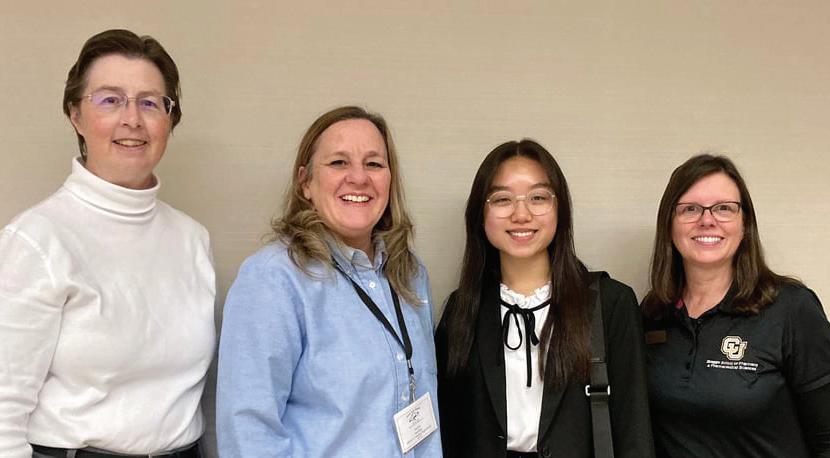
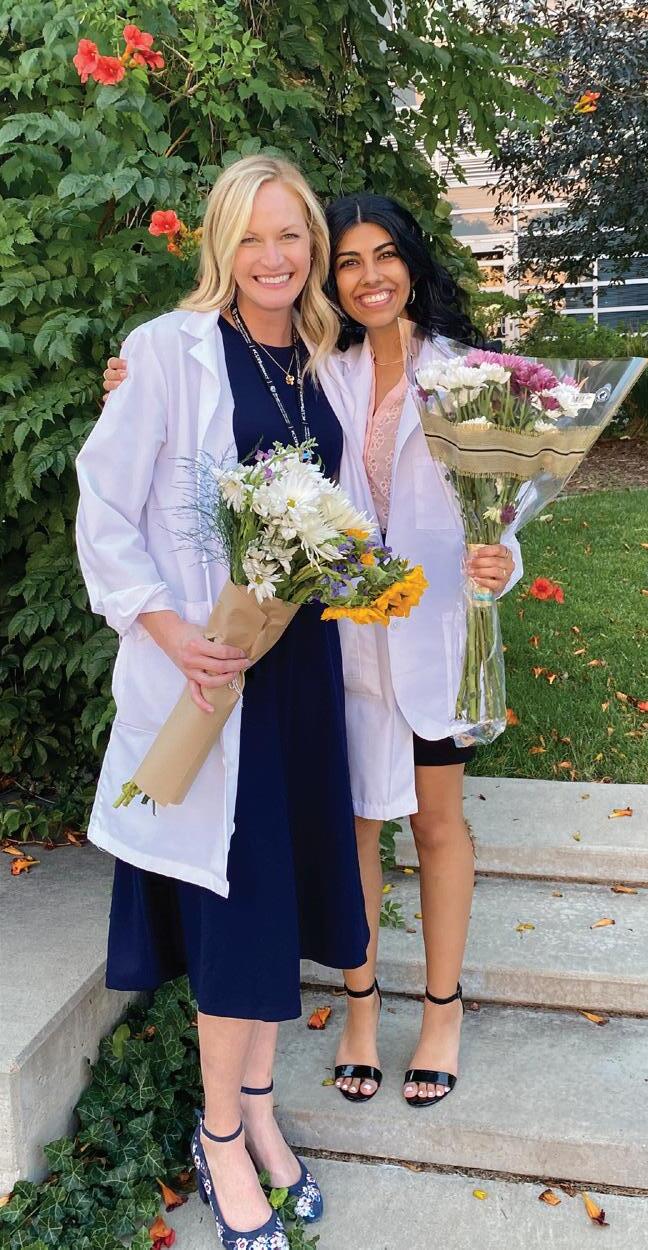
for pharmacy with Colorado HOSA students and their advisors through focused workshops, classroom visits, and one-on-one student mentoring. Rawlings has served on the Colorado HOSA Board of Directors since 2019.
According to Rawlings, despite the recognitions and awards, the real honor for her is being a part of opening up the world of pharmacy to a young person.
As a high school junior, Jenny Hoang was in one of the very first pharmacy science after-school classes offered by Rawlings in 2018. Fast-forward five years, and Hoang is now a first-year Doctor of Pharmacy student who credits her high school training for getting her to where she is today.
“Being able to participate in the pharmacy science division propelled me to go into pharmacy, as I really enjoyed studying for the competition and practicing the skills for it.” Hoang said. “I knew that I wanted to go to CU Pharmacy when I saw how passionate the pharmacy students and faculty were through the pharmacy science after-school classes. I had a really great impression of the pharmacy students that helped at the time, Dr. Rawlings, and Sue Finstrom, and knew that being a student at CU Pharmacy means that I would be surrounded by people who were enthusiastic about pharmacy, which is a great source of motivation.”
Jenny’s brother, Jason Hoang, was a high school freshman when he was introduced to HOSA Pharmacy Science. Jason has since attained mastery level of the Pharmacy Science event and achieved 6th place at the HOSA International Leadership Conference. He is currently completing his Bachelor of Science degree and plans to also pursue a career in pharmacy.
“The emerging opportunities in pharmacy are creating new and exciting roles for the next generation of pharmacists,” Rawlings said. “Those roles require heightened levels of professionalism, precision, leadership and patient-centered knowledge. CU Pharmacy’s ongoing support and mentoring helps ensure that our HOSA pharmacy students will excel in pharmacy school and be equipped for the changing pharmacy landscape.”
Let’s get a few things clear about a PharmD. It’s a doctoral degree in pharmacy, and since 2000 it has been required of all new practitioners. Many PharmDs do practice in clinical or community settings, such as a neighborhood pharmacy, hospital, or care clinic, but others also research or work in industry or academia.
For CU Pharmacy student Tamanna Talwar, the call to academia kickstarted her PharmD journey. Now a P3, Talwar and mentor, Assistant Professor Sara Wettergreen, PharmD, have been selected as one of the first student-faculty pairs in the American Association of Colleges of Pharmacy (AACP)’s Aspiring Academics Program, “designed to inform and inspire students from diverse backgrounds who are interested in pursuing an academic pharmacy career.” The program accepted only twenty student-faculty pairs from a nationwide pool of applicants.
When Wettergreen heard of the new Aspiring Academics program, she knew the program would be invaluable. She thought of Talwar, and suggested to her that she apply.
“Tamanna is a bright, highly motivated individual who seeks to gain a variety of experiences throughout her educational experience,” she said. “I knew her career goals, including her interest in exploring a career in academia.”
Talwar hopes to gain a deeper appreciation and understanding of the roles within the world of academia, and to apply that knowledge throughout the remainder of pharmacy school and in her post-graduate career.
No education would be complete without a dedicated mentor. For Talwar, Wettergreen has filled that role.
“Through her constant support, Dr. Wettergreen has allowed me to develop my own professional and academic skills,” Talwar said. “I am encouraged by her dedication to both her patients and the students she precepts. Her ability to foster engaging yet teachable conversations is a skill that I recognize in which separates a decent preceptor from a great mentor.”
With Wettergreen in her corner, and Talwar’s drive to succeed, the two are limitless. Their experience with AACP’s program will be unlike any other.
P1 Jenny Hoang (third from right) is pictured with (L-R) Susan Finstrom, Susan Hartley, Hoang’s high school HOSA advisor, and Dr. Julia Rawlings.Enzymes are ubiquitous in nature and present in every cell of our body, running life’s molecular machinery and acting as the first line of defense against cancer causing chemicals and other toxicants. Associate Professor Jed Lampe, PhD, and his team of researchers at CU Pharmacy are focused on gaining a better understanding of the role of these minuscule yet potent molecules and the chemical reactions that they catalyze. Their goal is to harness their knowledge of how enzymes function to enhance the safety and efficacy of medicines critical for human health and well-being.
The work of the Lampe Lab has recently been acknowledged by the National Institutes of Health (NIH) with two new R01 project grants totaling a combined $6.2 million.
Antibiotic resistance has been steadily increasing for the past several decades, so much so that many of the antibiotics that were used in the past, including beta-lactams such as penicillin and amoxicillin, are no longer effective by themselves and additional antibiotics are needed. These drugs, estimated to save around 200,000 American lives annually and add 5-10 years of life expectancy at birth, may, however, be less effective in some patients. In particular, pediatric cystic fibrosis (CF) patients may suffer recurrent infections that often lead to the development of antibiotic resistant bacteria. The Lampe Lab is investigating one of these potential culprits: Pseudomonas aeruginosa (P. aeruginosa), a bacteria found in plants, mammals, and humans. While often harmless in healthy people, it can be opportunistic and highly dangerous in CF patients and burn victims.
While most enzymes serve valuable purposes, Sylvie Kandel, PhD, in the Lampe Lab has identified a certain type of enzyme produced by P. aeruginosa, called a cytochrome P450 monooxygenase (or CYP, for short), that can metabolize the fluoroquinolone antibiotics that are often used to treat Pseudomonas infection in patients. Dr. Kandel is actively working to identify new drugs that will inhibit the Pseudomonas CYP enzyme, thereby preventing it from metabolizing the fluoroquinolone antibiotic and making the bacteria more susceptible to its effects. These types of inhibitory drugs, known as antibiotic “adjuvants” (or “helpers”), have already been developed for other bacterial enzymes that metabolize antibiotics, such as the beta-lactamase enzyme which metabolizes beta-lactam antibiotics. By inhibiting the beta-lactamase enzyme, these adjuvants help keep the concentration of the antibiotic high so that it can be effective.
The potential impact of this treatment could be far-reaching, benefiting hundreds of thousands of patients infected annually with this deadly bacterium, including those suffering from severe burns received during the wars in Ukraine and in the Middle East.

In contrast to the project focused on improving antibiotic efficacy, the second Lampe Lab project, also awarded an NIH grant, explores the role of enzymes in drug toxicity. The two projects are linked in that they both are trying to understand how CYP enzymes metabolize drugs. Although, in this case, the focus is on antiviral drugs that are metabolized by human, not bacterial, CYP enzymes. Under normal circumstances, CYP enzymes in the human liver protect us by detoxifying our blood from unwanted chemicals and drugs.
However, some CYPs also have a “night job” whereby they synthesize and eliminate steroid hormones that are important for our normal physiological function. It is important for your body to keep a tight control over the concentrations of these powerful hormones, particularly during pregnancy and the first few weeks of life. Inhibition of either synthesis or elimination can result in serious adverse effects, including low birthweight, adrenal insufficiency, and premature birth (one of the leading causes of infant mortality in the U.S.).
While CYP enzymes synthesize and metabolize steroid hormones critical for fetal and newborn growth and development, certain antiviral drugs can interfere with this process, leading to toxic steroid buildup and related complications.
The team, including Kandel and PhD student Emily Gracey, is studying specific CYP enzymes that contribute to these negative antiviral drug-hormone interactions in HIV-positive patients. They aim to make current antiviral drugs safer for pregnant women and their newborns, as well as design new drugs that do not inhibit these crucial enzymes in pregnant women and their infants infected with HIV.


Most biomedical researchers are more comfortable working toward scientific breakthroughs in their lab than working a crowd on a performance stage. But, James Roede, PhD, and his research colleagues are not your average lab rats. In fact, Dr. Roede, along with senior professional researchers John Marentette, PhD, and Cole Michel are part of Uncle Beef’s Band, an Americana rock group that is gaining a growing following in the Denver area.
According to Roede, it all started during the long, isolating hours of the pandemic. While some people took up hobbies like tending indoor plants or baking bread, Roede decided to learn how to play the bass guitar.
“The band started sometime in 2021 as a way to get away from the doldrums of the pandemic life,” Roede recalled. “I’ve always been interested in music and playing an instrument but never had the courage to get up and do it. I finally made the big jump to get an instrument, learn a little bit about where the notes were . . . John was able to teach me some songs and we just progressed from there.”
"John" is John Marentette, the brainchild and lead singer of the band. And, according to him, Dr. Roede was a quick study with the new instrument.
“I showed him just the framework of how to play the bass guitar and within days we were playing multiple songs together,” Dr. Marentette said.



Marentette is also the namesake of the band, and the member who explains the often-asked question, “What’s with the name 'Uncle Beef'??”
“It comes from a childhood name, Beefy,” Marentette said. “It’s also a play on being a Grateful Dead fan. One of their oldest songs is called Uncle John’s Band. My name is John . . . it just stuck.”
The third band member from the School of Pharmacy is Cole Michel. By day, Michel works in the Mass Spectrometry Lab studying proteins and small molecules in food and other biological samples. By night, he’s the band’s keyboardist and serves up stirring riffs with a side of head-banging flair.
When not on the stage or practicing for the next gig, Roede and Marentette work side-by-side in Roede’s toxicology lab studying how environmental chemicals affect oxidative stress. They study how different environmental exposures, things like pollution or processed foods, can contribute to a host of disease states from diabetes to cancer.
“You know, you hear that if you learn to play an instrument you can develop your brain in a different kind of way – become smarter in a different kind of way,” Roede said. “So, I was trying to use that to hopefully improve my research here – but actually it’s done even more than I would have ever hoped for.”
For Marentette, the band provides a therapeutic break from the day-to-day demands of toxicology research.
“For me, when it comes to playing music, it’s always been a stress-reliver. It just makes everything melt away and you don’t have to think about anything else that’s going on in the world other than the next chord, the next note, the next lyric,” Marentette said. “And that’s what I’ve always loved about playing music. And getting these other folks here in the mix - it just makes it that much better.”
“I feel like this band is an opportunity for our school – and not just for the School of Pharmacy – but for the university community,” Roede said. “I think this is a unique opportunity for community building, to rally around and kind of bring people back together.”
Uncle Beef’s Band playing a live show.When are you reading this? Maybe it’s Wednesday, just after lunch. Maybe it is Saturday morning, and you have some free time. Wherever you are, or whenever it is, at this very moment, the CU Pharmacy class of 2024 is creating change.
They started at CU Skaggs School of Pharmacy in the fall of 2020, the same year the World Health Organization declared Covid-19 a global pandemic. It would have been easy to change their mind, to stay in their comfort zone, and to just not. Instead, they showed up because the class of 2024 believes in something bigger than themselves.
Uyen Dinh showed up because as an undergraduate chemistry major at CalPoly, she would sit with her best friend in the lab and dream about pharmacy school in Colorado. Originally from Vietnam, Dinh moved to the United States when she was 17 and carried a pocket English translation dictionary with her to graduate high school.
“I could do science, I could do math,” she explained, “and I needed help learning English.”
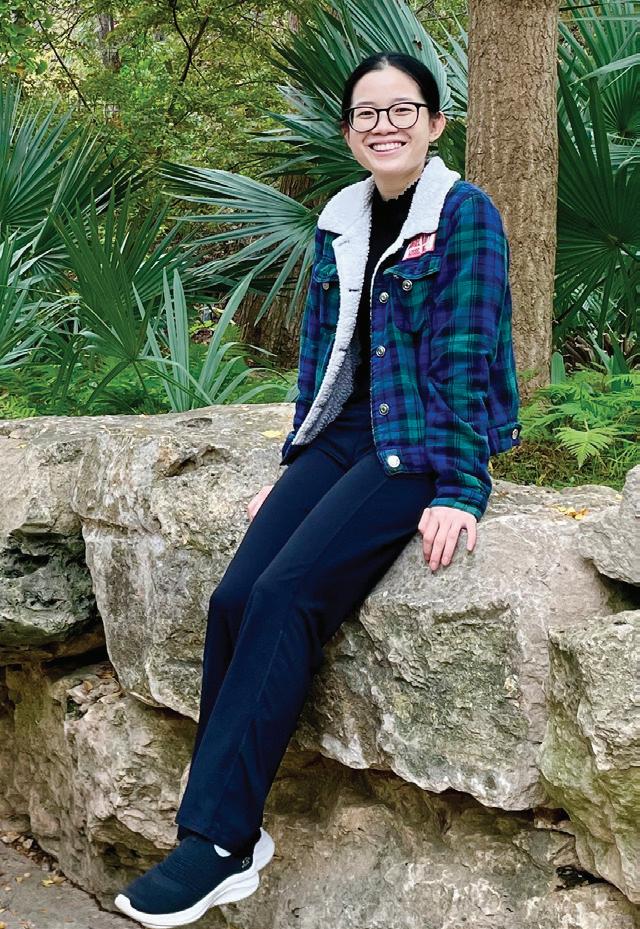
As a first-generation student, Dinh’s family was supportive but also did not have the same lived experience to offer academic help. So, Dinh did what came naturally to her: research. She began exploring everything she could find about healthcare careers, schools, and further education. Before she made a commitment to move to Denver and attend pharmacy school, she needed to make sure it was the right path for her.
“I took a gap year,” she said, “and I worked in a pharmacy and that is when I decided that, yes, this is what I want to do.”
Through her independent drive for education, she discovered a passion for nuclear pharmacy and chose three of her elective rotations to be in oncology.
“I shadowed a nuclear pharmacist, and I took a didactic course for a nuclear medicine certificate so that I could learn the foundations, the chemistry, and the mathematics behind nuclear medicine,” she said. “There is a lot of compounding, every day is a new day.”
Dinh loves the thrill of a new day so much that she applied for, and was hired, as a nuclear pharmacist with Cardinal Health. She starts this spring.
Oh, and that best friend from CalPoly, who used to dream of pharmacy school with Dinh in the chemistry lab? She is fellow 2024 CU Pharmacy graduate Yuna Jung. Together the two of them have proven that determination, and a good friend, can accomplish almost anything.
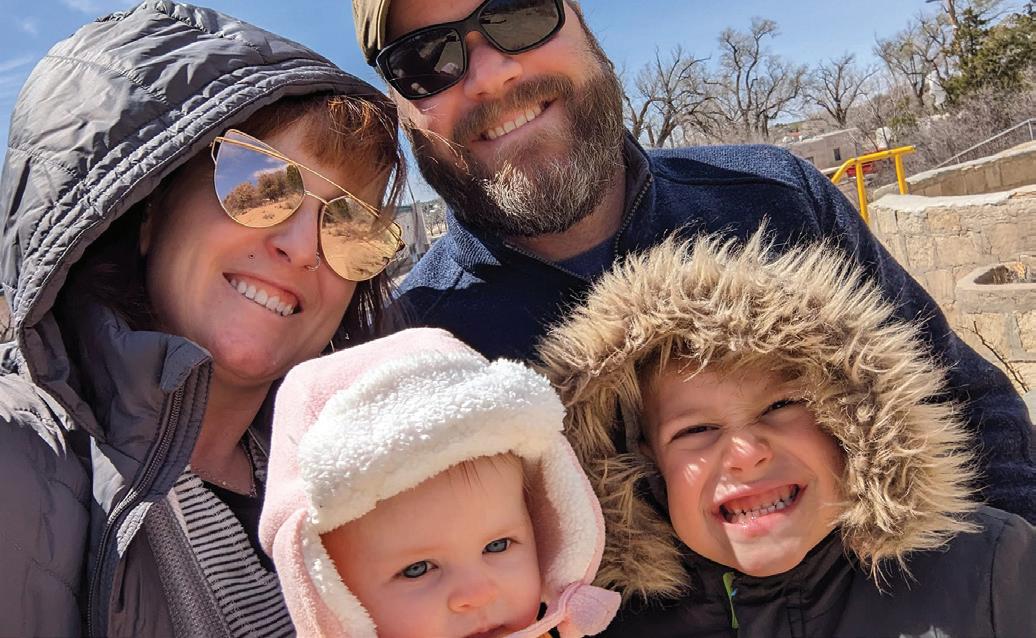
Michael Brace’s good friend who stuck with him through pharmacy school is his wife. Brace is thoughtful, full of dad jokes, and juggled his family, pharmacy school, and work to graduate. Originally from Durango, Colorado, Brace’s return to school caused his family to move not once, but twice, to reach CU Pharmacy.
“I was a medical assistant and a lab tech for fifteen years and discovered that I liked to help patients understand more about their medication,” he said. “Some of my patients didn’t know why they were taking medicine.”
Brace saw many patients with diabetes and high blood pressure, and he enjoyed helping them manage their medications. The medical doctors in his office encouraged him to do more with his skill set. Brace, with the support of his wife and son, started an undergraduate degree at the University of Colorado, Colorado Springs, with every intention to become an MD.
“Somewhere along the way, a pharmacist said to me that I needed to think about pharmacy,” he said. He was accepted into CU Pharmacy’s program and moved his family to the Denver Metro area to attend school.
Soon, his family welcomed a second child and Brace’s juggling got a little more complicated. Yet, he never lost sight of the goal. One of his favorite rotations was working in ambulatory care, helping patients during the pandemic understand their diabetes medication, and during drug shortages, learning to compound so that his patients could manage their disease.
Uyen Dinh visits a botanical garden while in Texas doing her elective APPE rotation in nuclear pharmacy.What excited Brace the most about pharmacy school? Being done. His determination set an example for his children to follow, but he is ready to spend more time with them.
“I can’t wait to just be able to do karate with my son,” he said. “It’s been school for a long time, and my family is my priority. I’m ready for more outside time, more camping, more of that.”

Madeline Quigley is also ready to spend time outdoors, but the former division one cross country star was able to do some of that during school.
“One of the first weeks here,” she said, “I was talked into running the Boulder Skyline Traverse.”
The traverse, an 18-mile + trail (depending on which way you go), connects five peaks and about 6,000 feet vertical gain, is no small feat. Pun intended.
But then again, neither is pharmacy school.
“I’m originally from Massachusetts, and I went to undergrad at the University of New Hampshire,” she said. “When I toured [CU Anschutz], I immediately fell in love with it. “The professors are at the top of their field, the campus is amazing, and access to the best health systems in Colorado right on campus is what really sold me.”
Quigley’s undergraduate degree is in nutrition, which has been a benefit in pharmacy school.
“Depending on the patient's disease state, I can help counsel about their medications and also offer insight into how their diet may impact their condition” she said.
In addition to school, rotations, tests, and running, Quigley completed an inpatient internship in ambulatory care at Poudre Valley Hospital. A sixty-mile drive from campus, she spent two weekends a month at the hospital.
“Ten out of ten, would do it again,” she said. “This internship allowed me to mimic what I will do as a pharmacist about as closely as possible while still under an intern license. They had a lot of trust in me and because of that I learned more than I ever imagined.”
This summer, she is headed for a PGY1 residency in ambulatory care at the University of North Carolina, her top choice.
“I feel like if there was any residency out there tailored to me, it is this one,” she said.
Believe That You Can

Nick Perez also feels like his residency was tailored to his interests.
“I’m doing an Acute Care PGY1 at UC Health Memorial in Colorado Springs,” he said. “I’m excited, from other experiences with UC Health, the level of education is outstanding.”
Perez has enjoyed all of his education, and spent his final rotation at Denver Indian Health and Family Services, Denver's only Urban Indian Health Program providing culturally appropriate care for American Indian and Alaskan Native adults, children, and families.
"I do it all here," he said. "Patient care, paperwork, billing. I have learned a lot."
Perez grew up on an alpaca farm in Maryland, obtained his undergraduate degree from Florida State, and applied to CU Pharmacy because if it’s top-tier ranking – and he really wanted something different.
“My sister understood, she got that I wanted to move away and do something new,” he laughed. “My mom, on the other hand… I think she would have liked to have me closer.”
Perez laughs a lot. He uses humor to connect with his patients, has dabbled in standup comedy, and his energy naturally attracts a following. As a P1 he was class secretary and decided to run for class president when other students assumed he would.
“I was able to run for class president because others saw an energy in me, and it gave me confidence,” he said. “I realized that potential is in everyone. If you believe in that, and feed it, in anyone, you can accomplish a lot. I see that in my classmates. They all have potential and if you nourish that, everyone can accomplish a lot.”
He has one message for incoming students.
“Believe in yourself, harder,” he said. “You are part of something bigger, and if you believe in that, and you believe in yourself, you can make an impact.”
Madeline Quigley summits during a trail run. Nick Perez works with Dr. Leah Fitzgerald at the Denver Indian Health Clinic during a rotation.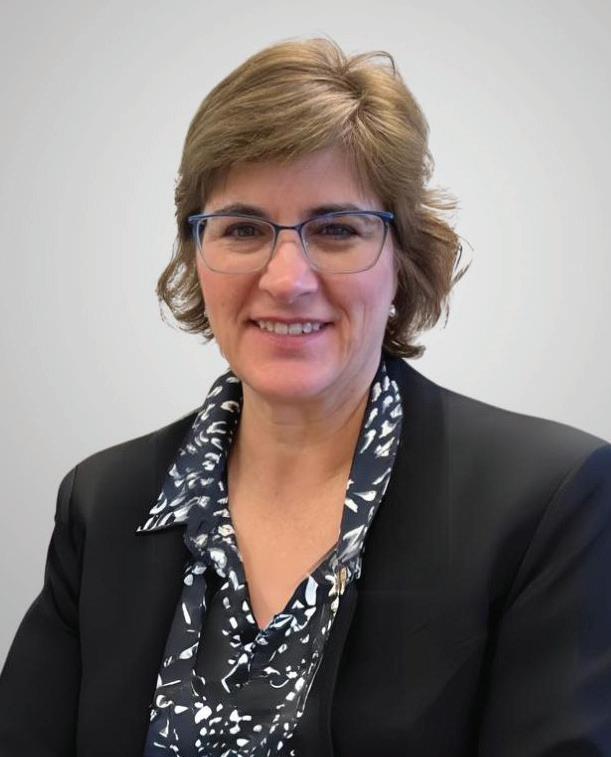
“I’ve been a practicing pharmacist for thirty-three years,” Sarah Merbach recounts. “I am in this for the patient, I am not in this for any other reason.” Merbach is a pharmacist at the Mayo Clinic where she does a weekly daynight rotation, seeing patients with urgent needs that she must dose immediately. She is in pharmacy for the patient. But Merbach is graduating with her PharmD entirely for herself.
Before 2000, pharmacists needed a Bachelor of Pharmacy and a license to practice (an RPh). After 2000, a PharmD became required of new pharmacists but those already practicing were allowed to continue. Merbach was one such pharmacist – but not anymore. She is graduating with a PharmD from CU Pharmacy's North American-Trained PharmD program, a distance program built for pharmacists like Merbach.
Throughout her career she’s worked in hospital pharmacy, long-term care settings, clinical care, and spent decades in pharmacy leadership.
“I’ve always been a natural team player. I am not in this for me,” she said.
Tragically, her husband, already struggling with cancer, passed away from a preventable drug adverse reaction.
“It changed my perspective,” she said. “It made me even more dedicated to the profession of pharmacy, more dedicated to the pharmacist role. I became more enthralled, more engaged than ever.”
Merbach changed roles within pharmacy, she moved twice, and she started her doctoral program.
“I went back to school because I had been in pharmacy management for twenty-five years and when I came back to the
clinical world, I really didn’t feel like I was up to speed,” she said. “I felt like an imposter… my integrity would allow me to do nothing less.”
Through the process, she has been able to apply what she learns immediately in the field. The fall of 2023, while managing school and work at the Mayo Clinic, she completed an internship with the Food and Drug Administration’s MedWatch Program. According to the FDA, MedWatch receives reports from the public and when appropriate, publishes safety alerts for FDAregulated products – everything from blood thinners to gene therapies to hearing aids.
“I saw how incredibly thorough the FDA actually is,” she said. “Even the tiniest detail was reviewed and questioned. Nothing was overlooked.”
Her goal, after graduation, is to find joy.
“Or,” she laughs, “find joy again.”
Merbach believes everyone, especially pharmacists, need to be well rounded because it makes them a better pharmacist. Outside of work, she loves to scuba dive. Each spring she joins her local dive community on an international group trip to the next great destination.
“You always need a stress reliever in your life,” she said. “And I love going with the group. It’s the best thing to do because you have that human connection, and it is so much more fun.”
The true challenge for Merbach will be only managing her day job. She gets restless easily, so she is taking that one day at a time but with an updated perspective.
“It’s been an exciting journey for me,” she said. “For me, there are no limits on what I can do.”

I AM IN THIS FOR THE PATIENT, I AM NOT IN THIS FOR ANY OTHER REASON.New Doctor of Pharmacy, Sarah Merbach. Merbach enjoying scuba with her dive club.
For many, the United Arab Emirates (UAE) may seem very distant, both in geography and culture. However, for one newly graduated Doctor of Pharmacy, bridging the gap between nations feels as natural as chatting with a neighbor next door.
Growing up in Abu Dhabi, Zohour Anouassi inherited her parents’ curiosity and appreciation for the world beyond the borders of their Middle Eastern country, exploring new places to learn about and gain respect for the diversity that unites us all.
This same curiosity motivated her to pursue her doctorate degree in the United States, leading her to become the first Emirati at CU Pharmacy, where she recently completed the International-Trained PharmD (ITPD) program.
Her decision to pursue her doctorate in the U.S. stemmed from her adventurous spirit, childhood experiences, and an eagerness to explore new horizons. She is paving the way for future Emirati generations while shaping the future of healthcare in the UAE and beyond.
Zohour always wanted to be a scientist, inspired by her father –a renowned veterinarian, professor, surgeon, and author – and her mother, a strong businesswoman and the first woman to establish a nursery in the UAE. She was determined to continue her father’s 40-year legacy and mirror her mother’s strong will to help future generations. Her future in the veterinary sciences was set.
Until a conversation one day with her dad changed everything.
"He always encouraged us to embrace the unknown, insisting we could pursue any career we desired that serves humanity," she recalls. “He suggested I consider the growing field of pharmaceutical sciences, and the more I read about, the more intrigued I became.”
It was the beginning of a new career trajectory.
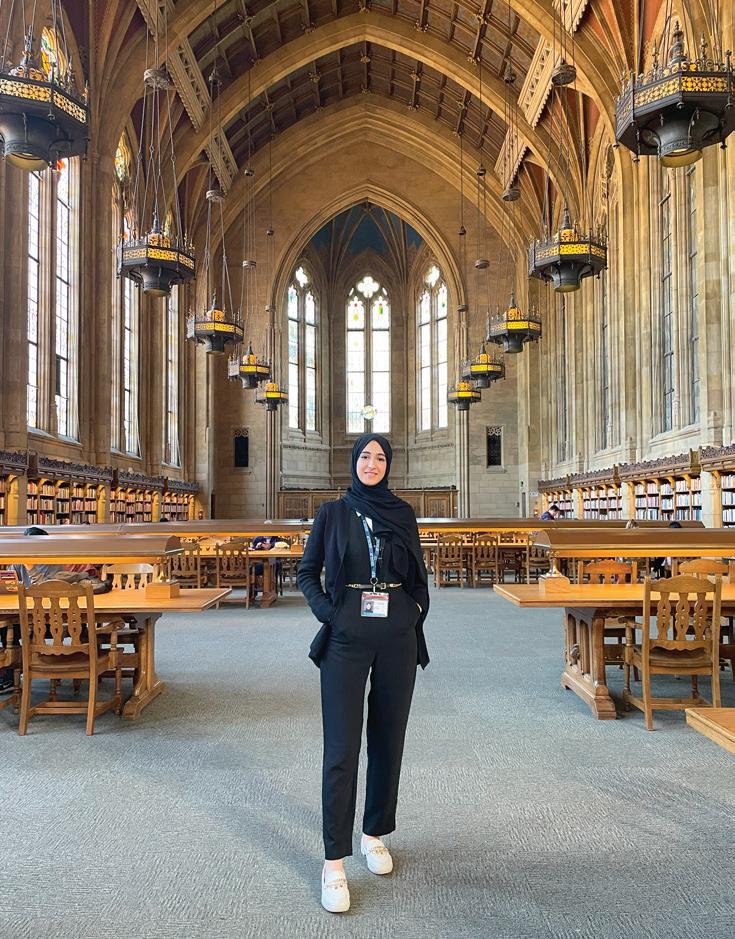
"I discovered that the pharmacist serves as the beacon of health and hope in so many sectors,” she explains. “And there’s such a high demand for pharmacists now."
Her second-grade teacher noticed that Zohour was being picked on by some classmates. “I remember her always embracing me whenever I felt

bad,” she says. That was until one day when her beloved teacher stopped coming to school without any explanation. Zohour later learned she had passed away from cancer.
Several years later, a cousin one month younger than her was also diagnosed with and later succumbed to cancer. The pain of that event had a devastating effect on the entire family and left an impression on Zohour.
“My grandmother was going through treatment at the same time as my cousin,” she says. “I still remember her telling me ‘I thought I would be the first to leave, not him,’ and I cried in silence. That day, I painfully understood, cancer and death had no regard for age or gender, and further pushed me into wanting to be an oncology pharmacist.”
Zohour obtained a bachelor’s degree in pharmacy followed by a master’s in health economics from the prestigious Paris-Sorbonne University Abu Dhabi. While there she studied the vital role that economics plays in healthcare and the profound impact it has on everyone – from patients, to providers, to insurance companies – within the system.
She was the first Emirati to complete the two-year master’s program.
She then ventured into clinical practice, breaking down another barrier by becoming the first UAE national to secure an ASHP-accredited PGY-1 Pharmacy Practice Residency at the Cleveland Clinic Abu Dhabi. This residency provided her with invaluable insights into various aspects of patient care and helped her become American board certified (BCPS).
Zohour also indulged her passion for teaching by providing clinical lectures to several universities in her homeland. Additionally, she assumed leadership roles in organizations like the M42 Youth Council, aimed at guiding and empowering the country’s youth in the medical field.
To obtain an ACPE-accredited PharmD and delve deeper into the U.S. healthcare system, Zohour decided to continue her education at CU Pharmacy after a recommendation by a close friend. In addition to her studies, she completed several rotations, each one led by supportive preceptors who often went out of their way to help her gain the most knowledge of her passion in oncology during each experience.
She recently wrapped up her final rotation at the renowned Fred Hutchinson Cancer Center in Seattle – the first CU pharmacy student to have a rotation there, paving the way for future students from the school.
Now that she’s graduated, Zohour is set to begin her oncology residency followed by a few months off to – not surprisingly – explore the world and “gain more appreciation for the diversity that unites us all.”
Anouassi speaks during her work at the Cleveland Clinic Abu Dhabi.

In the fall of 2022, Sydney Broyles found herself at CU Pharmacy getting a Master’s in Pharmaceutical Sciences, on the Pharmacokinetic (PK) and Pharmacodynamic (PD) track. PK studies a drug’s course of action in the body, and processes of absorption, distribution, metabolism, and excretion; PD examines a drug’s effects and mechanism(s) of action. PK and PD are crucial to understanding every stage of drug development.
Broyles, a brilliant and soft-spoken student, says she originally came to Denver because she loved the location and then she found CU Pharmacy. Or rather, she found Melanie Joy, PharmD, PhD.
Dr. Joy is a pharmacy professor, director of the Joy Lab on Kidney Disease Pharmacology, Director of Innovation and Commercialization for CU Pharmacy, Director of Entrepreneurship Education for the SPARK/REACH Program, and had an integral role in developing the Master of Science PK-PD program. Additionally, she was instrumental in developing relationships with the technology company Certara, Inc., leading to the designation of CU Pharmacy as a Center for Excellence for Model-Informed Drug Development. You could say that Joy wears (and owns) a lot of hats.
“I found out that CU’s [pharmacokinetics] program is designated as a Center of Excellence, and that piqued my interest. But when I started working with Dr. Joy, I found something I really enjoyed,” Broyles said.
In the fall of 2023, Broyles was ready to do two things: take her scheduled pharmacokinetics class and determine a project for her master’s thesis.
“Dr. Joy teaches that class,” Broyles said. "We talked, and she decided that she would teach me in her lab so I could graduate on time.”
Joy also had a suggestion for a thesis topic. Her lab had some data from a study on the therapeutic rituximab, a monoclonal antibody usually given through IV infusion to patients with non-Hodgkin’s lymphoma, leukemia, and autoimmune diseases including rheumatoid arthritis, among others. rituximab is FDA approved for these specific uses but is often prescribed off-label to treat membranous nephropathy, a type of autoimmune kidney disease that results in the appearance of large amounts of proteins in the urine. Treating membranous nephropathy is incredibly important, because kidneys are part of the body’s filtration system and kidney failure is fatal without treatment. Joy’s dataset was a study on using rituximab and included data on its off-label use in patients with membranous nephropathy. Joy, along with
other team members in the lab, suggested ways Broyles could use this for a thesis.
Broyles had a different idea.
“The thing about Sydney,” Joy said, “is that she reviewed the dataset, went home, and came back with a totally different way to model rituximab than what we were all thinking. Her approach to tackle this topic was original. One could say that Sydney was innovative in her approach to solve a vexing problem.”
Broyles’ project idea – to conduct a population pharmacokinetics study on rituximab as a treatment for membranous nephropathy – was something that had never been done, but that she was able to do with the existing data.
Population pharmacokinetic studies are analyses used to understand differences in target patient populations to help in discovering more effective and/or safer medication administration. The models that are developed allow for disease specific characteristics or covariates to be incorporated in order to personalize dosing regimens and to predict dosages for similar future patients in the specific population. Broyles’ model could help optimize rituximab dosing in this already high-risk population.
Her hard work is not without payoff.
“We are going to submit the research work for publication,” Joy said. “This is a very impressive study that could lead to better treatment outcomes for patients with membranous nephropathy.”
Broyles’ next step is to find a job, and while Denver originally attracted her to CU, she is not stuck on Colorado for her job search.
“I am looking anywhere,” she explained. “I want to work for a large pharmaceutical company, because studies like this have patient impact, and I want to be able to improve patient care.”
In 2024, Sydney Broyles has found herself on the path to her career.
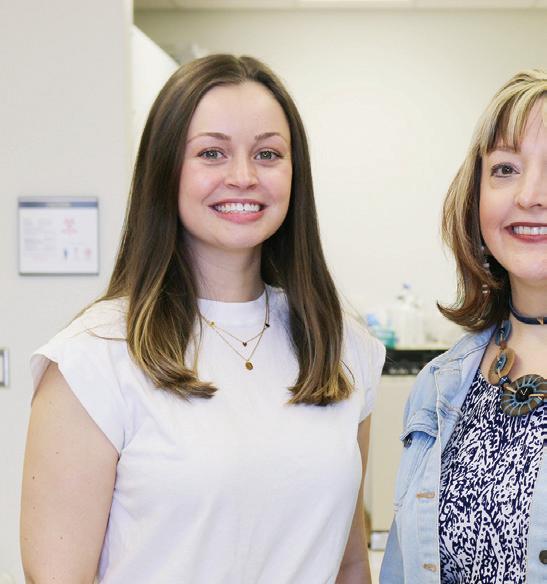
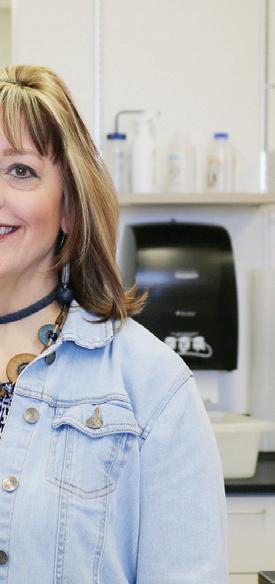

Since an early age, Hannah Work has been on a mission to dive into the healthcare world and lend a hand to those who need it most. Not as a bedside doctor – she doesn’t have the stomach for what doctors see every day, she says. So, instead of scrubs and stethoscopes, she went down a different road, one that will still let her make a big difference in people's lives.
Fresh out of high school in New Jersey, Hannah dove headfirst into the world of chemical engineering at Rowan University. She was all about science and chemistry and became involved in a number of research projects, including some not related to her major.
She interned at Dupont, working with CRISPR-Cas9 technology to enhance glucose use in bacteria. "Basically," she says, "I was editing genes to eliminate those that were non-essential to increase product yields with less energy expenditure by the cell.”
With funding from NASA, she also joined Dr. Nathaniel Nucci, a biophysics professor, to explore methods for improving drug delivery systems. It was during this collaboration that she first recognized the significance of protein therapeutics and drug delivery systems in optimizing drug administration.
After a lightbulb moment, she decided there may be better paths to a healthcare-related career than chemical engineering. “I learned that an education in chemical engineering was suitable for designing upscale batch reactors of drug products but not necessarily the optimal path for a career in pharmaceutical sciences,” she explains.
"I enjoyed laboratory work, especially when the project was healthrelated," Hannah reflects. "I wanted a career with a more direct connection to human health, and my undergraduate experiences motivated me to pursue a Ph.D. in pharmaceutical sciences."
But finding the right Ph.D. program wasn't easy. There weren't too many options out there, but CU Anschutz caught her eye. Plus, one visit to Colorado, and she was sold. "I fell head over heels for the place," she laughs.
But her timing wasn’t ideal.
Her arrival at CU coincided with the onset of the COVID-19 pandemic, restricting many of the typical learning opportunities for firstyear medical school students, including laboratory access.
She eventually landed in the Lampe Lab in the Skaggs School of Pharmacy and Pharmaceutical Sciences collaborating with Associate Professor Jed Lampe, PhD, who shared her enthusiasm for finding better
drug therapy treatments for pregnant women, babies, and fetuses –populations who often get left behind in medical research.
Her work has concentrated on studying the enzyme CYP3A7 and its potential impact on drug toxicity in pregnant mothers and underdeveloped infants. She explains that infants and fetuses metabolize drugs differently than adults, and this difference is often overlooked in medication prescriptions.
Through medical conferences, Hannah is sharing her CYP3A7 findings with the medical community and advocating for the adoption of a cost-effective and time-efficient cellular model she has developed based on her research.
Currently, she’s collaborating with fellow researchers to develop a machine learning tool that predicts potential enzyme interactions with drugs. She’s aiming to make the program freely accessible to all.
Hannah says she couldn’t have gotten to where she is today without help and encouragement from others, and she is committed to mentoring future researchers and scientists. She actively participates in Young Hands in Science and Women in STEM, engaging with students at underfunded elementary schools to foster their interest in science through hands-on experiments.
She’s especially concerned that many young women don’t have the confidence to pursue a career in science due to a lack of female STEM figures in their personal lives. She believes that many, including herself, tend to suffer from imposter syndrome. “I’m telling them that they are fully capable of having this kind of career and sharing examples of successful women who felt the same way as them at one point.”
Due to her advocacy work and her passion for science, Hannah was selected for the American Society for Pharmacology and Experimental Therapeutics (ASPET) Washington Fellows science policy program. She will soon advocate on Capitol Hill for increased funding of clinical applications supporting the health of pregnant individuals and developmental health of infants.
And once she wraps up her Ph.D., she's off to Boulder to work as a Senior Scientist specializing in drug metabolism pharmacokinetics at Cogent Biosciences. In this role, Hannah will assess how the company’s developed drugs are absorbed, distributed, and metabolized in the body. These drugs target rare, genetic-driven cancers in human patients, and she’s excited to continue serving the underserved communities in biomedical scienc
 Hannah Work, new PhD.
Hannah Work, new PhD.
SANDRA LEAL, PharmD, MPH, FAPhA, received the Distinguished Coloradan Award, the School's highest recognition of lifetime achievement.
Dr. Leal is the Vice President of Pharmacy Practice Innovation and Advocacy for CVS Health, Immediate Past President of the American Pharmacists Association, and a CU Pharmacy alumna. Dr. Leal has had diverse experience as a pharmacist, medical director, public health clinician, and as a board member for various groups including the National Center for Farmworker Health.

TARA VLASIMSKY, PharmD, was awarded the Excellence in Pharmacy Award, which recognizes individuals who demonstrate exceptional leadership qualities, have advanced the profession of pharmacy, and improved the health and welfare of society. Dr. Vlasimsky is the System Director, Ambulatory Pharmacy for Intermountian Health and a CU Pharmacy alumna.
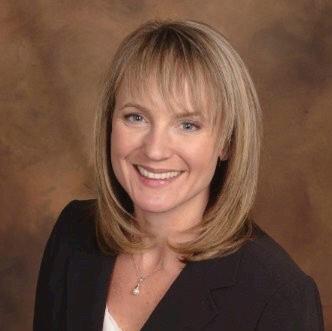
TYREE KISER, PharmD, Professor, received the President’s Excellence in Teaching Award. The President’s Excellence in Teaching Award is an acknowledgement of a faculty member’s outstanding, innovative, and inspirational contributions to the students’ professional development. This is the third consecutive year Dr. Kiser has received this award.
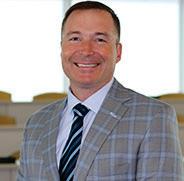

ELIZABETH TOMARO, MA, received the Staff
Appreciation and Recognition Award, which recognizes staff members for exceptional contributions vital for fostering a positive and thriving work environment.

Tomaro is an Academic Student Advisor in the Office of Student Services.
DANIEL LABARBERA and JED LAMPE, PhDs, received the Innovations in Science award, which celebrates innovative discovery in basic and/ or clinical sciences. Dr. LaBarbera is the founding Director of the Center for Drug Discovery (CDD), established in 2020. Dr. Lampe is an R01-funded principal investigator, educator, and scientific leader in the drug metabolism and pharmacokinetics field.
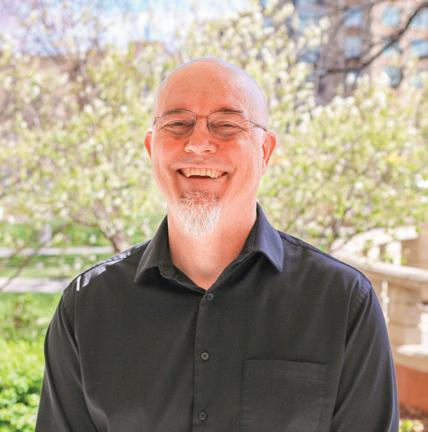
RAJESH AGARWAL, PhD, and CONNIE VALDEZ, PharmD, received the Faculty of Distinction Award, which recognizes a full-time CU Pharmacy faculty member who demonstrates distinctive traits that make them an outstanding role model for peers and students.
Dr. Agarwal is a Professor, Cancer Prevention and Control Program CoLeader, and holds dual appointments with CU Pharmacy and the University of Colorado Cancer Center. Dr. Valdez is a Professor of Clinical Pharmacy. Her practice site, The Denver Indian Health and Family Services medical clinic, provides primary care and wellness for American Indian Families and the Sheridan Health Services medical clinic provides primary care to low-income patients.


SUNNY LINNEBUR, PharmD, Professor, received the Chancellor’s Teaching Recognition Award from CU Pharmacy; MELANIE JOY, PhD, PharmD, Professor, received the Chancellor’s Teaching Recognition Award for the Graduate School. The purpose of the Chancellor's Teaching Recognition Award is to recognize and reward outstanding teaching and commitment to providing students with a high-quality learning experience.
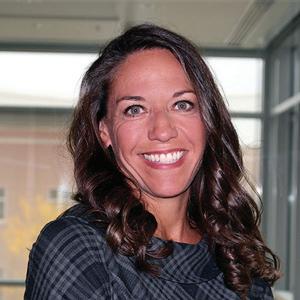
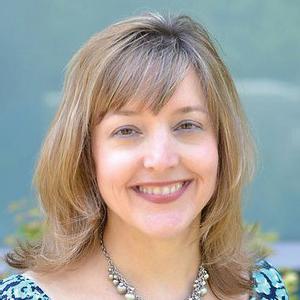
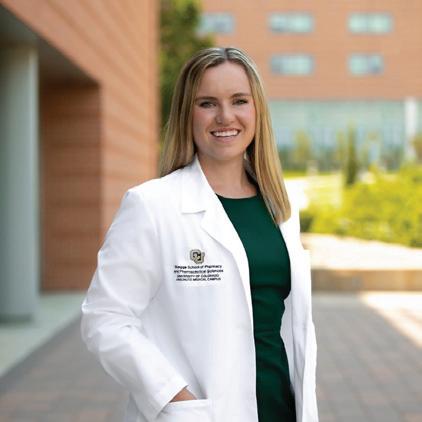
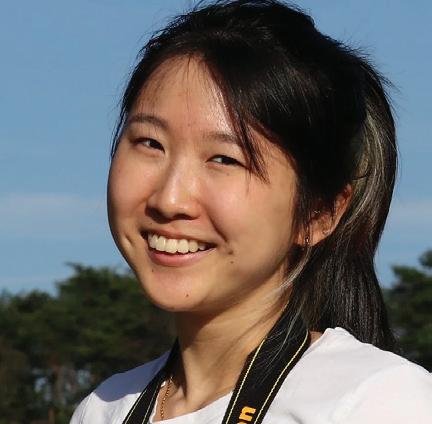
KIRI CARMODY and DIANE LEE, PharmD students, were prominently featured by RX for Climate Change for their efforts to bring sustainability initiatives to CU Pharmacy. Carmody and Lee created “Operation Sustainability” within the CU Pharmacy American Pharmacist Association Academy of Student Pharmacists (APhA-ASP) chapter and helped to build a partnership with Healthy Air and Water Colorado. Toby Trujillo, PharmD, serves as APhA-ASP advisor.

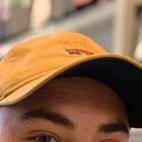

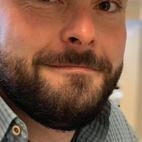





DANIEL FOSTER, PhD toxicology student, was chosen to represent the National TL1 grant program offered by the Clinical Translation Centers. Foster previously received a TL1 grant through the campus Colorado Clinical and Translational Sciences Institute (CCTSI) and recently received an F31 pre-doctoral grant from the National Heart, Lung, and Blood Institute (NHLBI). Jared Brown, PhD, serves as Foster’s advisor.
The CU Pharmacy PHI
LAMBDA SIGMA
CHAPTER, ALPHA XI, won the Phi Lambda Sigma national award for “leading the way” in the category of Diversity, Equity and Inclusion. Phi Lambda Sigma is the international Pharmacy Leadership Society. Joe Saseen and Sunny Linnebur, PharmDs, serve as advisors.

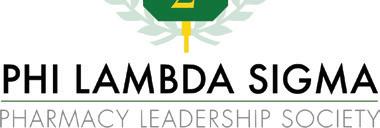
PhD students
LANA SALAH, Pharmaceutical Sciences; PAIGE ANTON, Toxicology; and VANESSA PATTERSON, Pharmaceutical Outcomes Research, are the recipients of the annual Harold C. Heim Award for Excellence in Research and Graduate Education. The distinction is accompanied by a $2000 cash award and is presented by Warren Heim, son of former Dean Harold C. Heim.
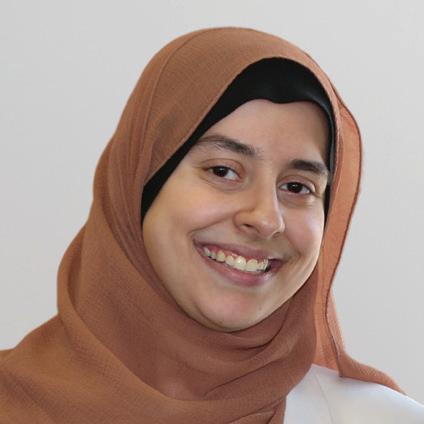


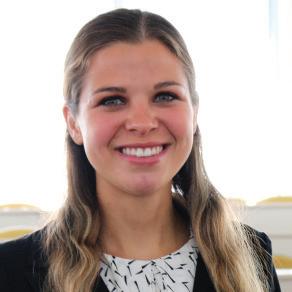
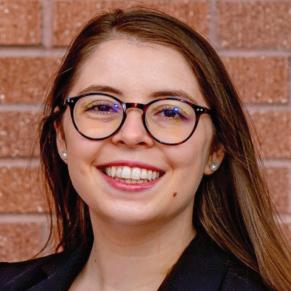
NATHASHA VIRRUETA and ELISA WORLEDGE, PGY2 Ambulatory Care residents, received two of the seven resident research awards presented by the American Pharmacists Association Foundation. Worledge’s research is titled “Achievement of Low-Density Lipoprotein Cholesterol (LDL-C) Thresholds in Patients with Very High-Risk Atherosclerotic Cardiovascular Disease (ASCVD).” Virrueta’s research is “Electronic Heath Record Outreach with Pharmacist Support to Address Medication Adherence in Medicare Advantage Enrollees.” Sarah Billups, PharmD, serves as their research advisor.
For a full list of student awards and recognitions from the 23-24 academic year, scan (or click!) this QR code


Embark on a new journey into the world of endless opportunities as you step into the distinguished ranks of the CU Pharmacy Alumni Association!
A network of dedicated professionals like yourself is waiting for you, all connected through the legacy of CU Skaggs School of Pharmacy and Pharmaceutical Sciences.
You're now an integral part of our ever-expanding 'pharmily', and the excitement doesn't end there! The best is yet to come with the support of our Alumni Association.
Stay plugged in, stay connected! Keep the bond with your alma mater alive as you dive into professional growth. Both our Alumni Of ce and Of ce of Career Services are here to guide you to success.
Curious to stay updated on all the buzz? Get started on all things alumni by visiting at CU Pharmacy by visiting pharmacy.cuanschutz. edu/alumni. Your adventure awaits!

Get ready for 2024 as the CU Pharmacy Alumni leadership ignites a new era of excellence!
With a fresh cohort of emerging leaders steering the ship on the Alumni Association's board, the stage is set for innovation and impact like never before!
Dr. Harold Okocha (PharmD ‘12), currently serving as the vice president of the board, is set to take the helm from Dr. Debbie Gallegos (PharmD ’10) as she completes her successful term as president in June. But fear not, Dr. Gallegos will continue her invaluable contributions to the association by remaining an active member of the prestigious past presidents’ group.
As we eagerly anticipate the next phase, let's not forget the buzz surrounding the recent nominations for new board members, which concluded on Monday, May 6. Led by Dr. Paul Minne (PharmD ’02), the Nomination Committee is hard at work, selecting and preparing to unveil the newest additions to our board over the summer. Stay tuned for the exciting announcements!
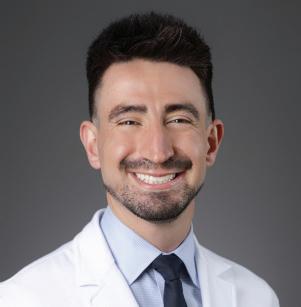
Lee
Amaya, PharmD, BCIDP, AAHIVP2018 alumnus Lee Amaya is immortalized in the rap video he created while a student in the PharmD program. Today, he is a Infectious Diseases Pharmacy Specialist in the oncology patient population with a focus in malignant hematology, blood & marrow transplantation, and cellular therapy at the Miami Cancer Institute of Baptist Health South Florida.
“My interest in infectious disease was first cultivated in pharmacy school and blossomed during the ID elective class during P3 year,” he said. “And I would be remiss if I did not mention the impact that the ‘Pharmacy Rap’ music video I created for the school in 2018 had on my career.”
Once the video was posted on CU’s social media platforms, Dr. Amaya cold-emailed Tim Gauthier (known as @IDStewardship on Instagram) the video and Gauthier shared it on all of his social media platforms.
For Amaya, it was a very cool moment. He did not realize that the best was yet to come. After graduation, Amaya completed a PGY1 pharmacy training at Nebraska Medicine in Omaha, Nebraska and then PGY2 ID pharmacy residency training at Beaumont Hospital (Corewell Health) in Royal Oak, Michigan.
“I went through a lot of adversity and challenging situations during my residency training that molded me into a more resilient man,” Amaya said. “Moving to unfamiliar areas without any family or friends forced me to become more selfsufficient and to find a community of people who I could lean on for support in times of hardship.”
Amaya counts his CU professors, his church community, his residency preceptors, and Tim Gauthier as his support team.

Watch the famous “Pharmacy Rap”!
“A few years later, Tim contacted me to interview for an infectious disease pharmacist position at Baptist Health South Florida after seeing my CV up on ASHP’s website,” he said. “Now Tim is my manager and I get to nerd out about infectious disease with him on a daily basis!”
Here's what you can look forward to for the remainder of the year!
The featured guest at the upcoming alumni forum is Dr. Gali Baler, the Managing Director of Strategy & Operations for CU Innovations. Join us Thursday, May 30 as he presents on the resources available to alumni and faculty to help them navigate the space of pitching research ideas, seeking out funding sources, and identifying other needs related to innovative ideas in research.
The alumni association will start off the fall semester with an Alumni Forum scheduled for Wednesday, Aug. 14. Please save the date as the location and topic will be provided in future communications. The purpose of the forums is to offer alumni, students, and friends of CU Pharmacy the space to network as well as showcase new developments in the profession.
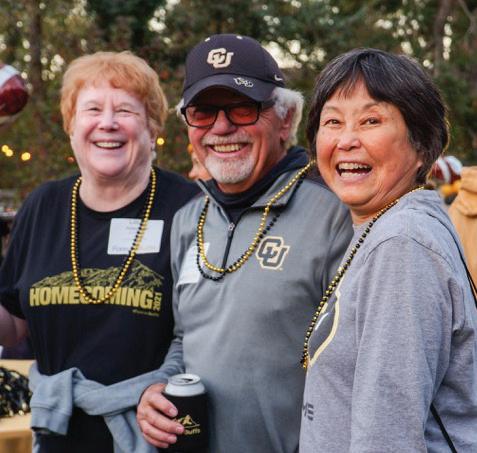
CU Pharmacy alumni
Lillian Alderman, Bill Masse, and Betty Wakimura at Homecoming.
The time to celebrate doesn’t end with Commencement. Another celebratory event is Homecoming, taking place beginning Saturday, Sept. 21. Join us in cheering on the CU Buffs as they take on the Baylor Bears.
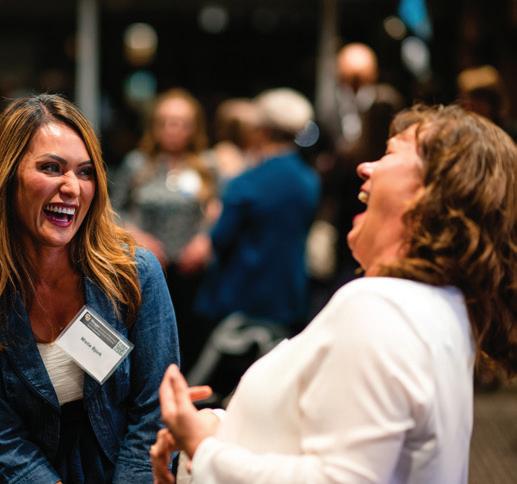
The CU Anschutz Alumni Central Of ce will hold its annual All Alumni Celebration for the CU Anschutz Medical Campus Sept. 26-28, featuring events such as class reunion gatherings, campus tours, a Rockies baseball game, breakfast at the Children’s Museum of Denver, and a Speakers’ Series. Look for more communication on these events through the Central Alumni Of ce.
The CU Pharmacy Alumni Association in collaboration with the School’s Career Services Of ce is organizing an exposition with workshops and exhibits throughout the day for alumni and students to participate in. Over the course of the day, attendees will have access to employers, resources in career development, and other opportunities for staying engaged with the school and the network of professionals in Pharmacy.
The annual Alumni Awards & Recognition Dinner, will be taking place Friday, Oct. 11. Set aside time to celebrate the accomplishments of CU Pharmacy alumni during the 5th Annual Alumni Awards Ceremony.
Rxperiences - Alumni Talks (Boulder Edition) – November TBD
If you live in the Boulder area or are planning to be in the area, consider joining us for this regional alumni gathering with complimentary hors d'oeuvres and beverages. Connect with local alumni in the community and hear about advancements and the latest innovations reshaping pharmacy through the lens of alumni presenters! Stay on the lookout for future communications about these events and more. Brought to you by the CU Pharmacy Alumni Association.
Do you have news of your own? Tell us about it, even if it's just to update your contact information! Use the QR code to keep in touch.
Jaron Bryant is the alumni relations manager for CU Pharmacy. Since 2009, Jaron has been building and forging relationships with alumni, faculty, and the student body. If you have questions related to alumni relations with the School, please contact him by email (jaron.bryant@cuanschutz.edu) or phone (303-724-0415).
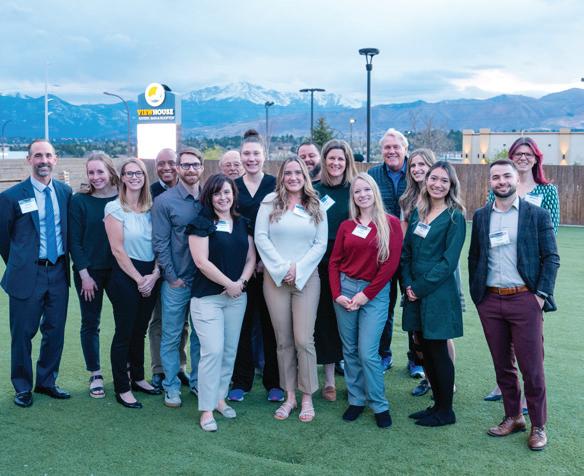
The first Rxperiences social hour and panel was a huge success.
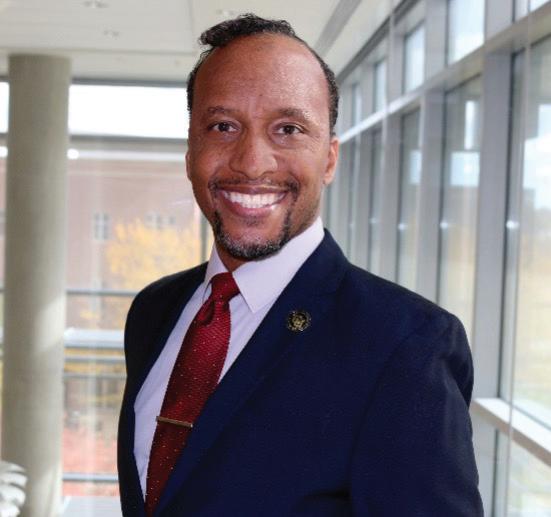 Alumnae Mistie Bjork and Monika Nuffer share a laugh at the annual alumni awards.
Alumnae Mistie Bjork and Monika Nuffer share a laugh at the annual alumni awards.
Skaggs School of Pharmacy and Pharmaceutical Sciences
Mail Stop C238
12850 E. Montview Boulevard Aurora, CO 80045
Address service requested
YOUR STORY
Pharmacy Perspectives is produced by the School of Pharmacy's Marketing and Communications Office.
Have news to share?
Let us know: sop.communications@cuanschutz.edu

An estimated 28.8 million adults could benefit from using hearing aids, but access and cost continues to be significant barriers. Congress addressed this issue by establishing a new category of hearing aids to be available over the counter (OTC).
Now, following an FDA ruling, pharmacists must be ready to serve the millions of adults who will be seeking hearing loss solutions for the first time at the community pharmacy.
CU Pharmacy’s innovative Continuing Education team is here to help you learn more about the ruling, and steps to take to move into this new territory. “Pharmacy-Based OTC Hearing Aids Certificate” is a 9-module self-study, estimated to take three hours and designed to help you help America hear better.

